Cozy up at your next get-together with friends and family with my homemade Sukiyaki recipe. In this dish, we sear marbled beef and simmer it with tofu, mushrooms, and vegetables in a sweetened soy sauce. This family-style dinner will warm your stomachs and hearts with its authentic Japanese flavors.
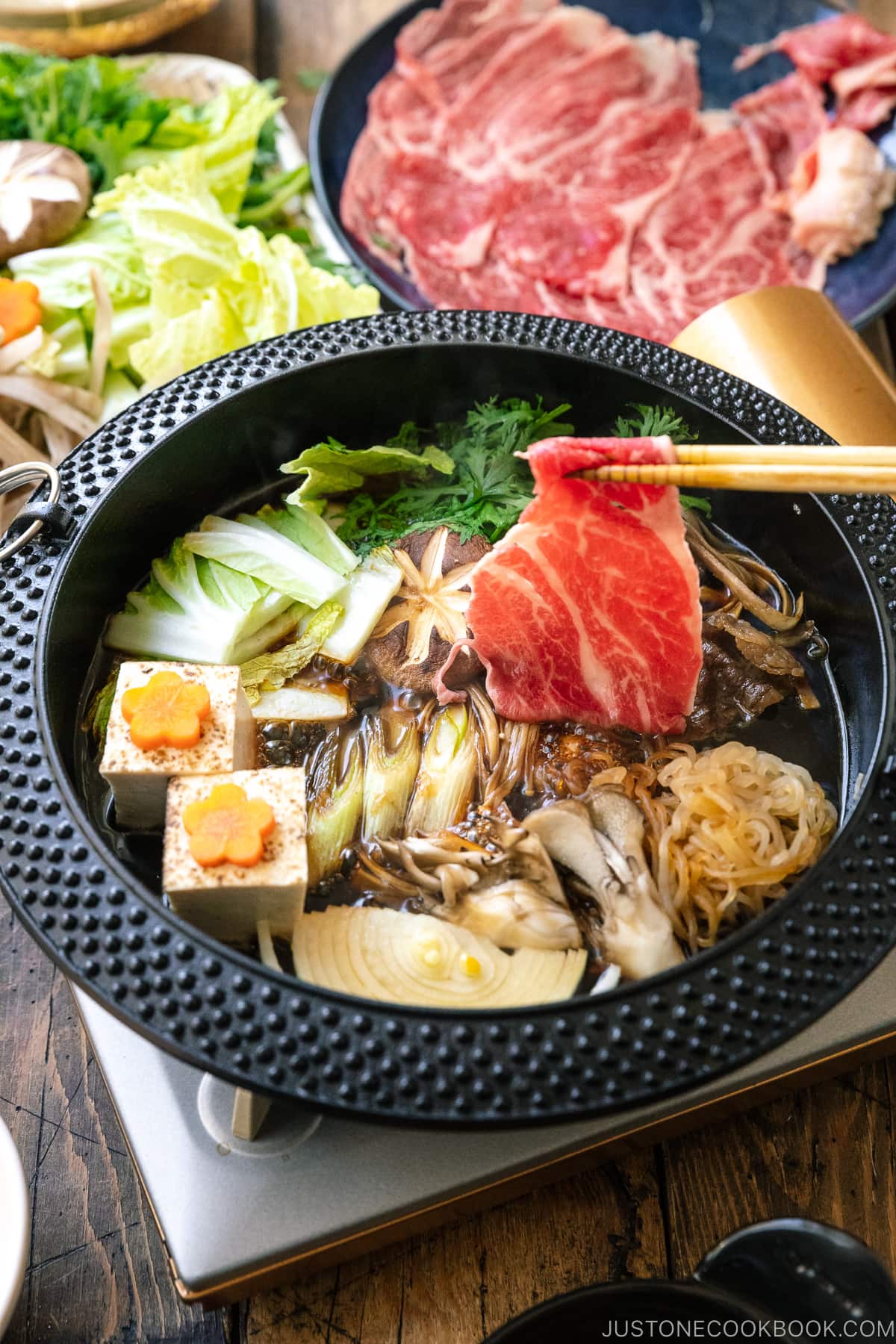
The Japanese love cooking nabe hot pots, especially in the cold winter months. While there are many variations, one of the most popular hot pot dishes is Sukiyaki (すき焼き) or Japanese Beef Hot Pot. It’s warm, flavorful, and an easy social meal to share with a close-knit group of family or friends.
Today, I want to show you how you can replicate and enjoy sukiyaki at home.
Table of Contents
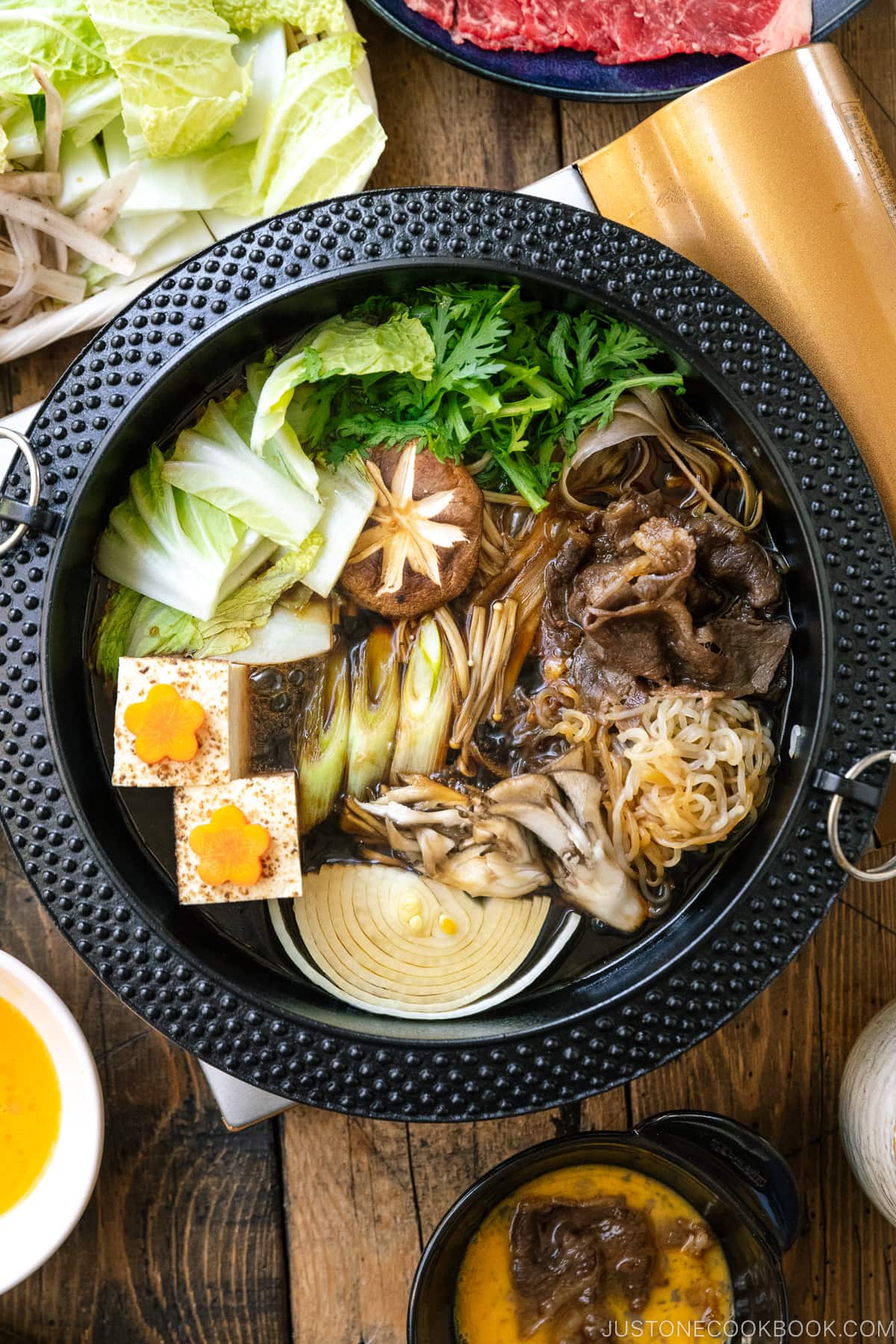
What’s Sukiyaki?
Sukiyaki (すき焼き) is a popular Japanese hot pot dish that we often prepare and serve at the table. We slowly grill or simmer well-marbled beef, alongside vegetables, tofu, and mushrooms in a shallow cast-iron pot. The soup broth is rich and bursting with sweet, salty, and savory flavor.
Interestingly, the Kanto region once called their version of sukiyaki gyunabe (牛鍋). Gyunabe’s popularity spread from Yokohama, where many foreigners lived, and then became popular in Tokyo. Gyunabe then influenced the sukiyaki culture in the Kanto region.
When the Great Kanto Earthquake happened in 1923, the gyunabe restaurants in the Kanto (Tokyo) region disappeared. During that time, sukiyaki restaurants in the Kansai (Osaka) region expanded into the Kanto region. Since the two dishes were quite similar, people in the Kanto region started to call their original gyunabe ‘sukiyaki.’
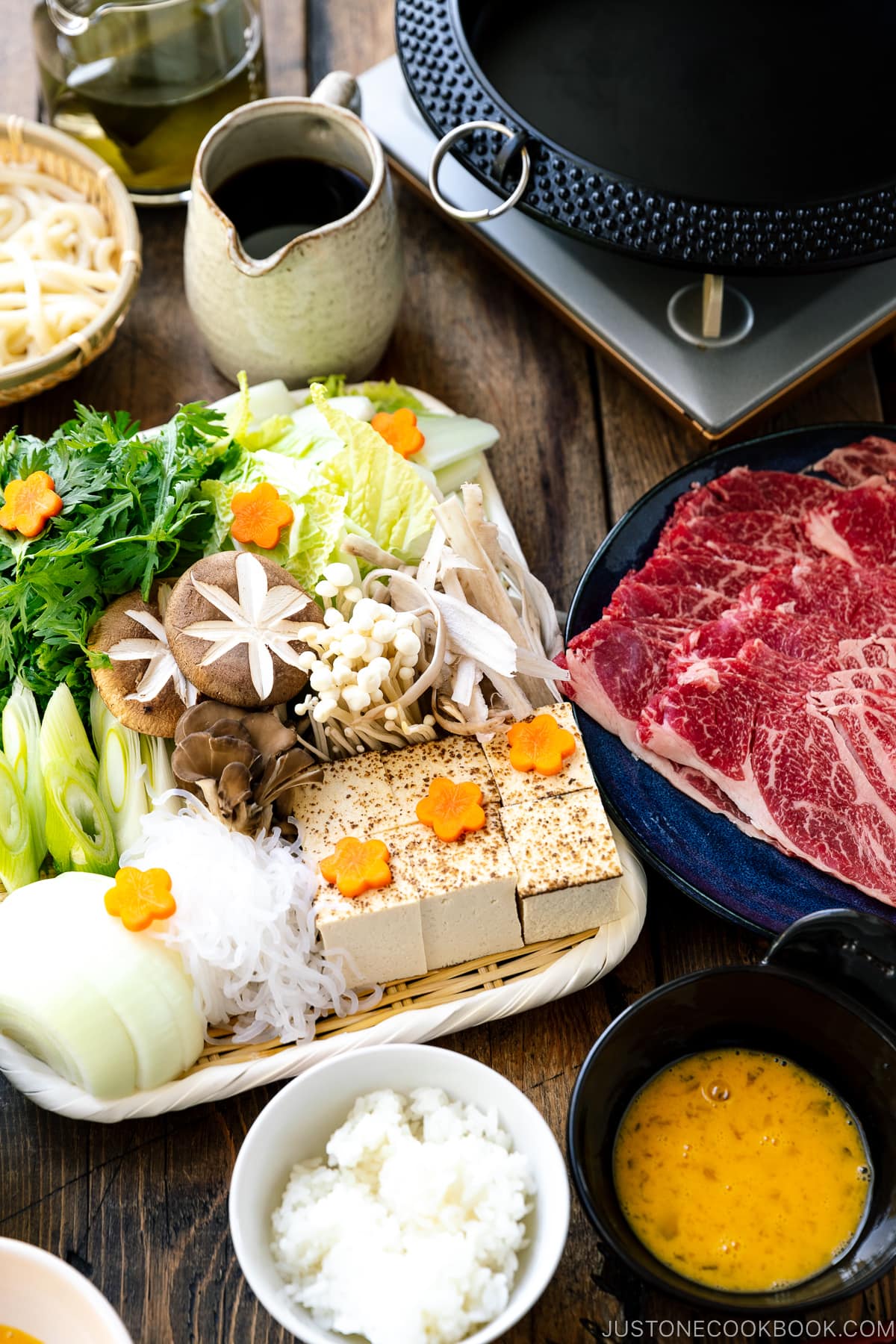
Kansai Style vs. Kanto Style Sukiyaki
Did you know that there are two types of sukiyaki? We have the Kanto-style and the Kansai-style and there are some distinctions between them. As my mom’s side of the family is from Osaka (Kansai) and my dad’s side is from Tokyo (Kanto), I grew up eating a mix of Kansai and Kanto foods without realizing it.
Both regions enjoy sukiyaki with a beaten egg, but people would cook and enjoy the dish differently.
Kanto-style Sukiyaki
The most noteworthy feature of Kanto-style sukiyaki is the warishita (割り下) or sukiyaki sauce. The sauce is made by boiling soy sauce, sake, mirin, and sugar and diluted with kombu dashi to your liking. It plays an important role in determining the overall taste of the dish (we’ll talk about it later).
Also, the Kanto version grills the beef in a cast iron pot. Some people grill the beef directly on the greased pot while others cook the beef with a little bit of the sukiyaki sauce. For my recipe, I used the latter method to avoid marbled beef from getting stuck on the cast-iron pot.
After you enjoy a few slices of the beef, you would then simmer the remaining meat and other ingredients in the warishita until tender. This style of cooking is hugely influenced by the original gyunabe.
Kansai-style Sukiyaki
On the other hand, Kansai-style sukiyaki involves grilling each slice of beef in the cast iron pot. When both sides of the meat are about 80% cooked, we would sprinkle plenty of sugar so that it covers the surface of the meat. Then, sprinkle soy sauce to balance out the flavor.
After enjoying a few slices of beef, you would then add vegetables such as napa cabbage. It doesn’t use dashi stock so the Kansai-style sukiyaki doesn’t have much moisture and the flavor is slightly stronger.
Since the moisture content in vegetables varies depending on the season, the cook needs to adjust the seasoning accordingly in order to achieve the best flavor. Therefore, the skill of the person who makes it greatly influences Kansai-style sukiyaki. This is where the nabe bugyo (hot pot magistrate 鍋奉行)’s skills are shown!
In my recipe below, I use the Kanto-style sukiyaki method because it’s a lot easier for beginner cooks to follow.
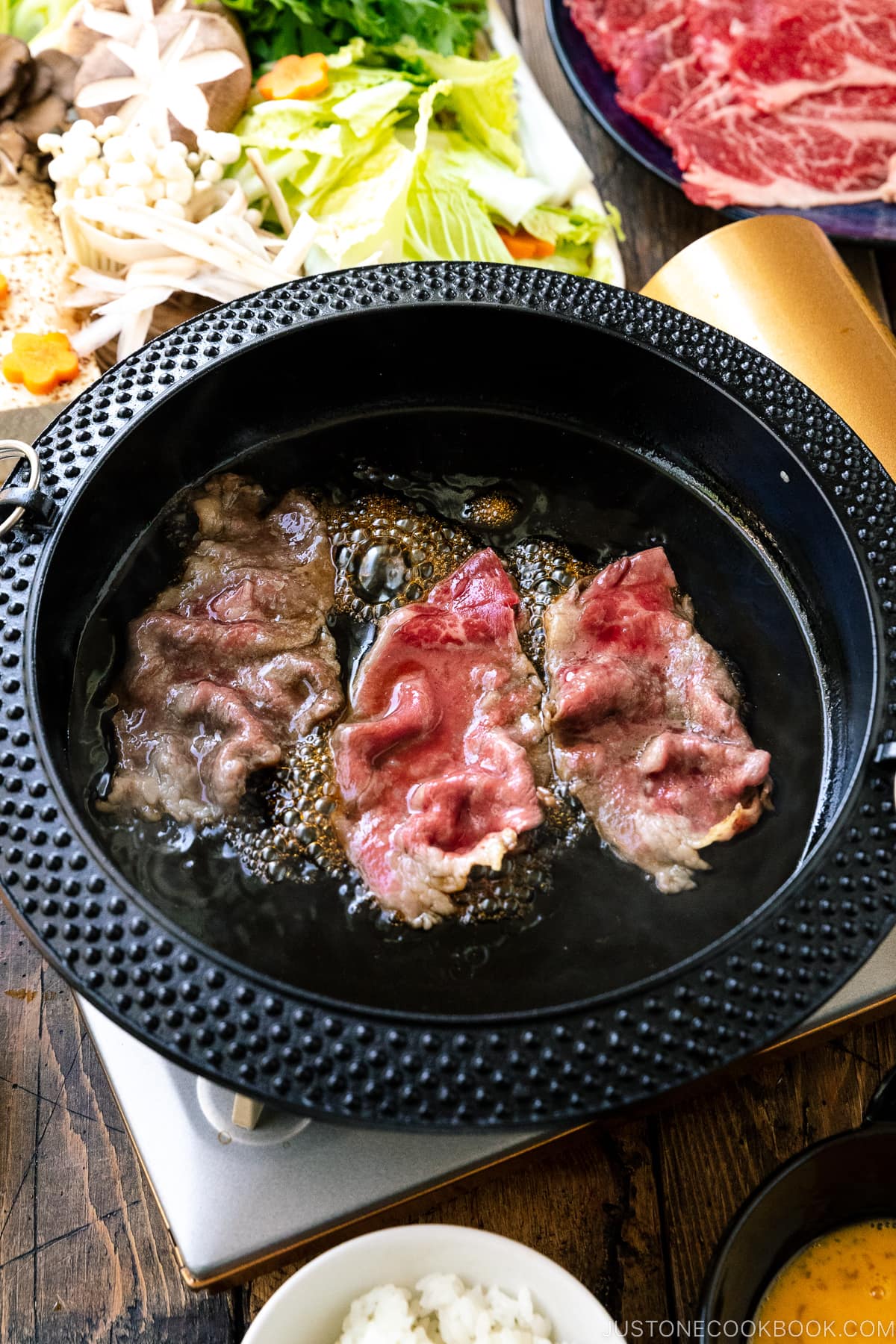
Well-Marbled Sukiyaki Beef
Unquestionably, beef is the star ingredient for this hot pot, so I recommend using quality meat when making sukiyaki at home.
The Japanese like to splurge and enjoy really good quality, well-marbled beef for both sukiyaki and shabu shabu. Wagyu (beef from cows raised in Japan) is very expensive ($40/lb), so typically each person only enjoys about 120-150 grams of sliced meat. Because of the higher fat content in each slice, you don’t really need a lot of it.
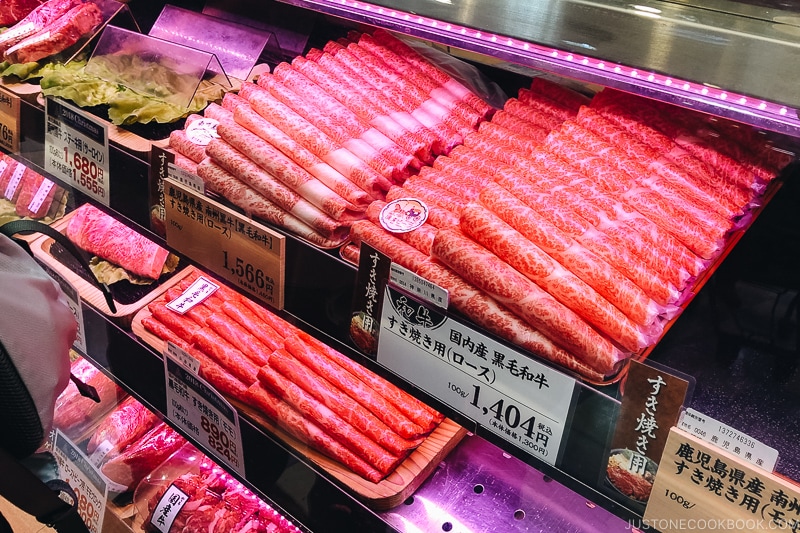
Japanese grocery stores have packages of thinly sliced “sukiyaki beef.” They also have “shabu shabu beef” but those are thinner than the ones for sukiyaki, so don’t pick the wrong package. We do not want chewy meat for the hot pot. If possible, find a well-marbled piece of meat so that the fat of the meat becomes tender when you eat.
If you can’t find pre-sliced beef, you can try slicing the ribeye at your home. Follow my directions and tricks on How To Slice Meat.
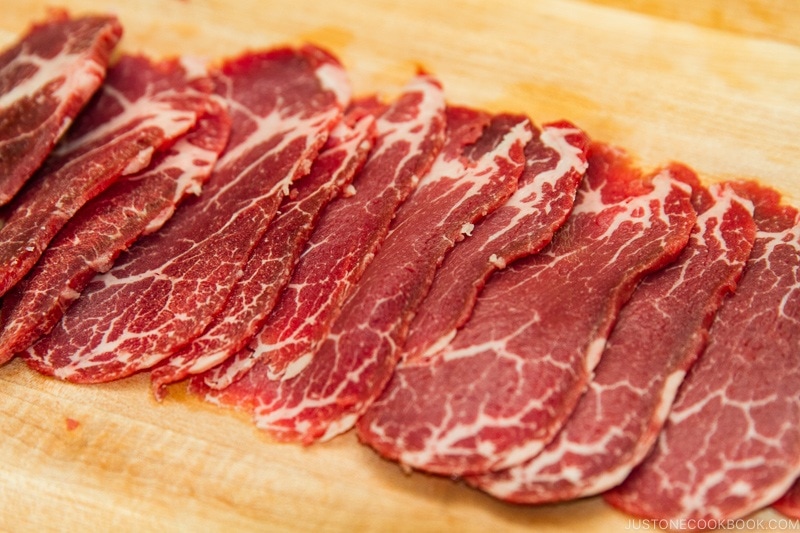
Make Your Own Sukiyaki Sauce (Warishita)
The Kanto-style sukiyaki needs warishita (割り下), the sukiyaki sauce. It’s very simple to make with just 4 ingredients: soy sauce, sake, mirin, and sugar.
Some recipes already include kombu dashi in the sauce while others don’t. I prefer to keep them separate so that the sukiyaki sauce lasts longer in the refrigerator (water/dashi in the sauce will not keep long).
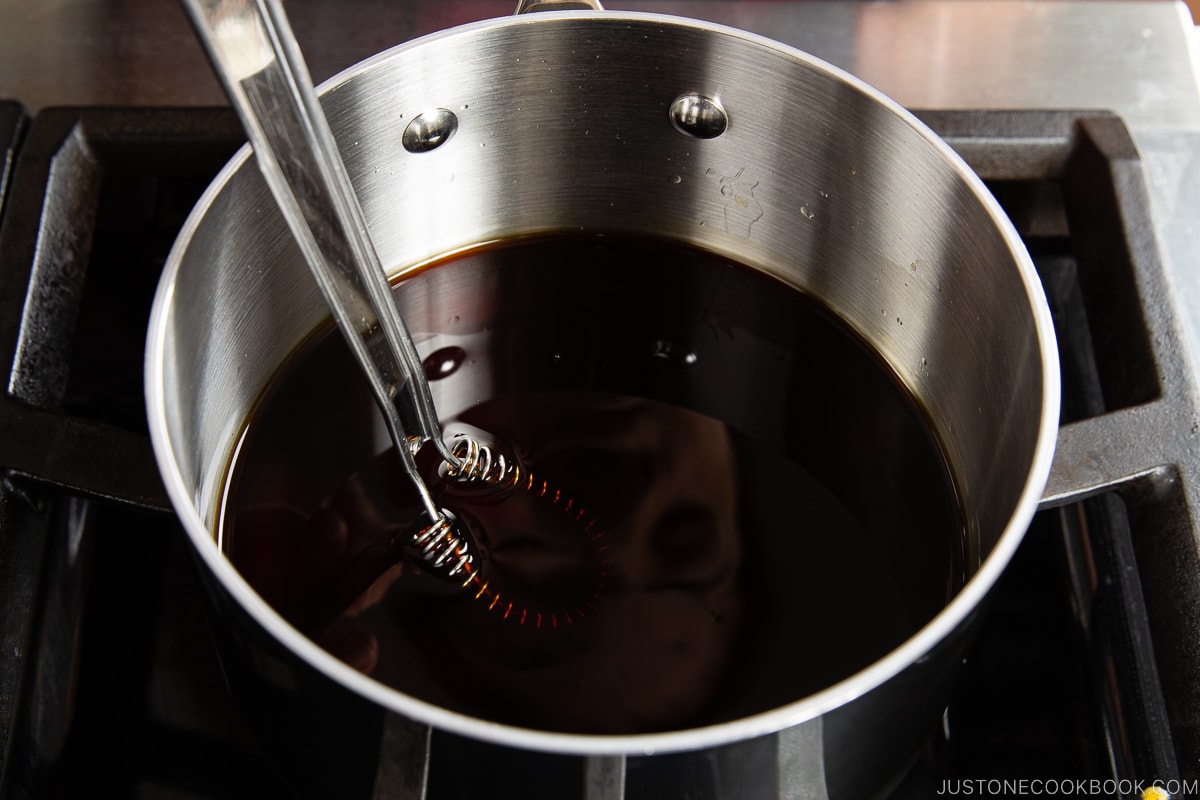
It’s very easy to cook the sauce. Boil the sake and mirin first to let the alcohol evaporate, then add sugar and soy sauce until the sugar is completely dissolved.
Make the sukiyaki sauce ahead and store it in an airtight container in the refrigerator for up to a month (or longer!). You can use this sukiyaki sauce for Gyudon (Beef Rice Bowl), Simmered Beef and Tofu (Niku Dofu), Nikujga (Japanese Meat and Potato Stew), simmered fish, and more!
Sukiyaki Ingredients and Substitutions
Besides good quality beef, you will need to prepare a variety of vegetables, a few kinds of mushrooms, grilled tofu (or regular tofu), and shirataki noodles (yam noodles).
Typically we use leafy vegetables such as napa cabbage and chrysanthemum greens, onion, Tokyo negi (long green onion), carrot, and gobo (burdock root).
You can also use more common vegetables like cabbage, spinach, watercress, eggplant, potatoes, or any other Asian vegetable such as bok choy or bean sprouts. These are not classic sukiyaki ingredients, but they will still taste delicious cooked in the sukiyaki sauce!
For vegan/vegetarian, you can use meat alternative products or add more tofu and meaty mushrooms such as king oyster mushrooms.

Cooking Sukiyaki at the Dining Table
We usually cook Sukiyaki in a cast-iron pot over a portable butane stove at the dining table. I recommend getting these items for sukiyaki and other table-top Japanese hot pot dishes.
- Cast-iron sukiyaki pot – I got mine from MTC Kitchen (use JOC10 for 10% off!).
- Iwatani portable butane stove – MTC kitchen sells this and this.
- Butane Fuel for the portable stove
Can we use a donabe (Japanese clay pot) for sukiyaki? The answer is no. You are not supposed to use high heat for the donabe and it’s not meant for grilling/searing the meat.
For the table, each person will need their own set of chopsticks, a medium bowl/plate for the cooked food from the pot, and a small bowl for a beaten egg. Prepare a few sets of communal long cooking chopsticks for cooking the raw meat and vegetables.
It’s a fun dinner for family and friends’ get-together, and not to mention, all you have to do is to chop ingredients before dinner time!
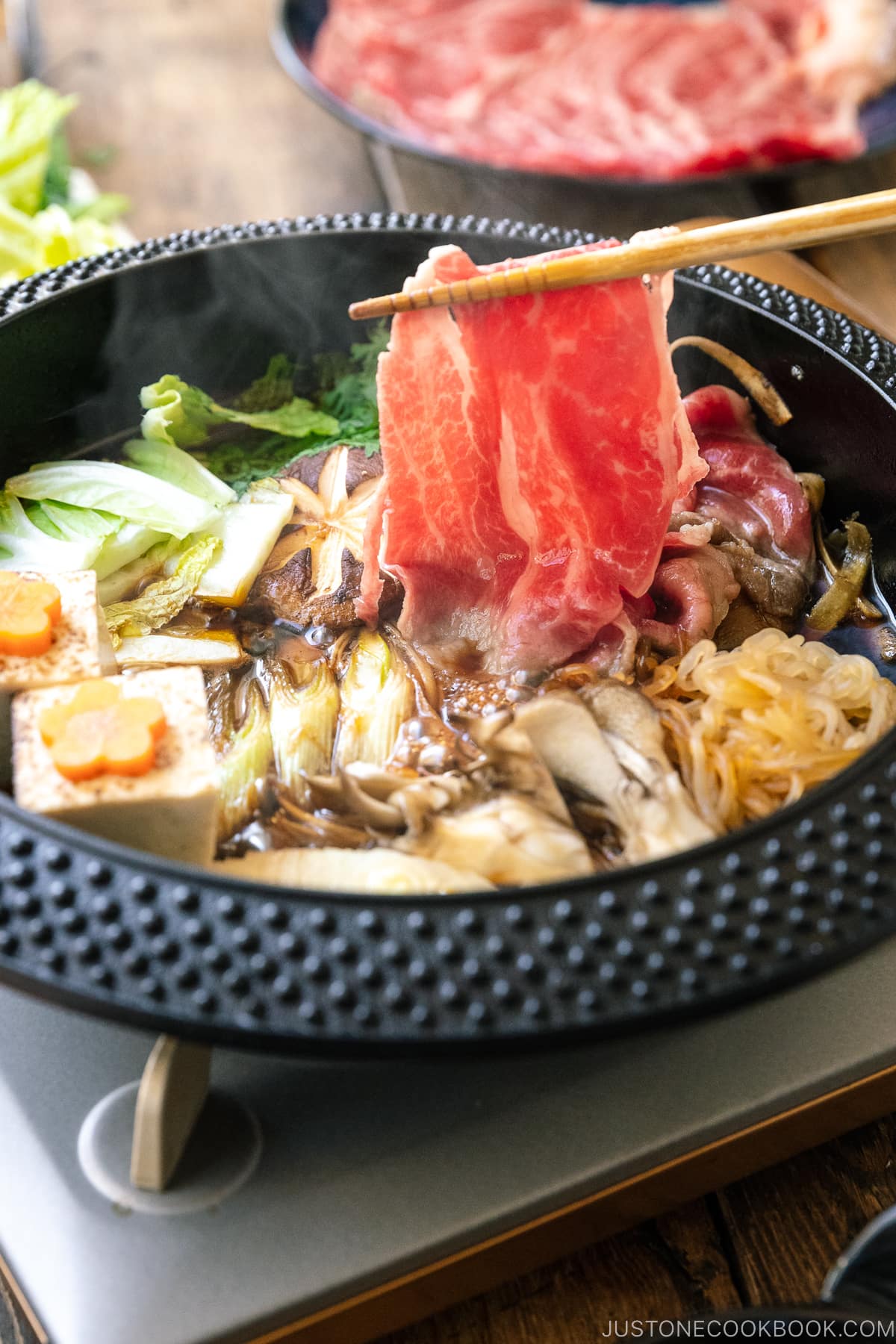
How to Eat Sukiyaki the “Authentic” Way
I am a bit hesitant to talk about the “authentic” way the Japanese enjoy sukiyaki as some of you may not find it appetizing. However, since some of you may eat sukiyaki in Japan and this is the traditional way to enjoy sukiyaki, so you won’t get caught off guard. Whether you follow this method or not, I think it’s worth discussing it here.
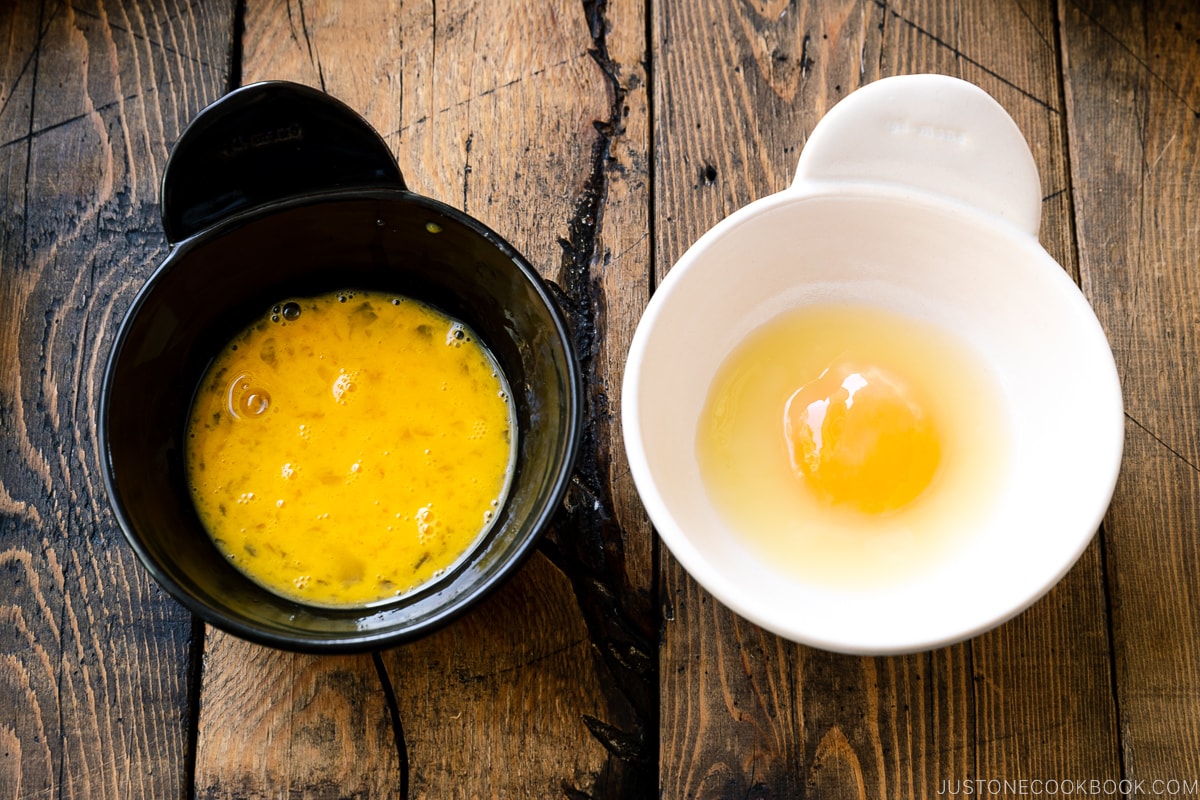
In Japan, we enjoy sukiyaki by dipping cooked beef and other ingredients in raw eggs. I know, I can almost hear “eww” from some of my readers but that’s the fact.
In the past, eating meat was officially prohibited until the Meiji era in Japan. Ordinary people were not allowed to eat meat until the Meiji emperor started eating beef. So it was said that dipping sukiyaki in cold eggs helps eliminate the smell of beef and to prevent burning your mouth with hot food. Thanks to improvements in meat quality, it is now common to eat delicious beef. Also, dipping it in an egg gives it a deeper flavor, so this way of eating has continued to this day. It’s a custom that we eat sukiyaki with an egg, but some people skip it.
If you travel to Japan and try sukiyaki there, I actually highly recommend trying it at least once as eggs there are considered safe to consume raw. The sweetness from raw egg coats well with salty, strong-flavored beef and vegetables and it amazingly balances out the flavors very well.
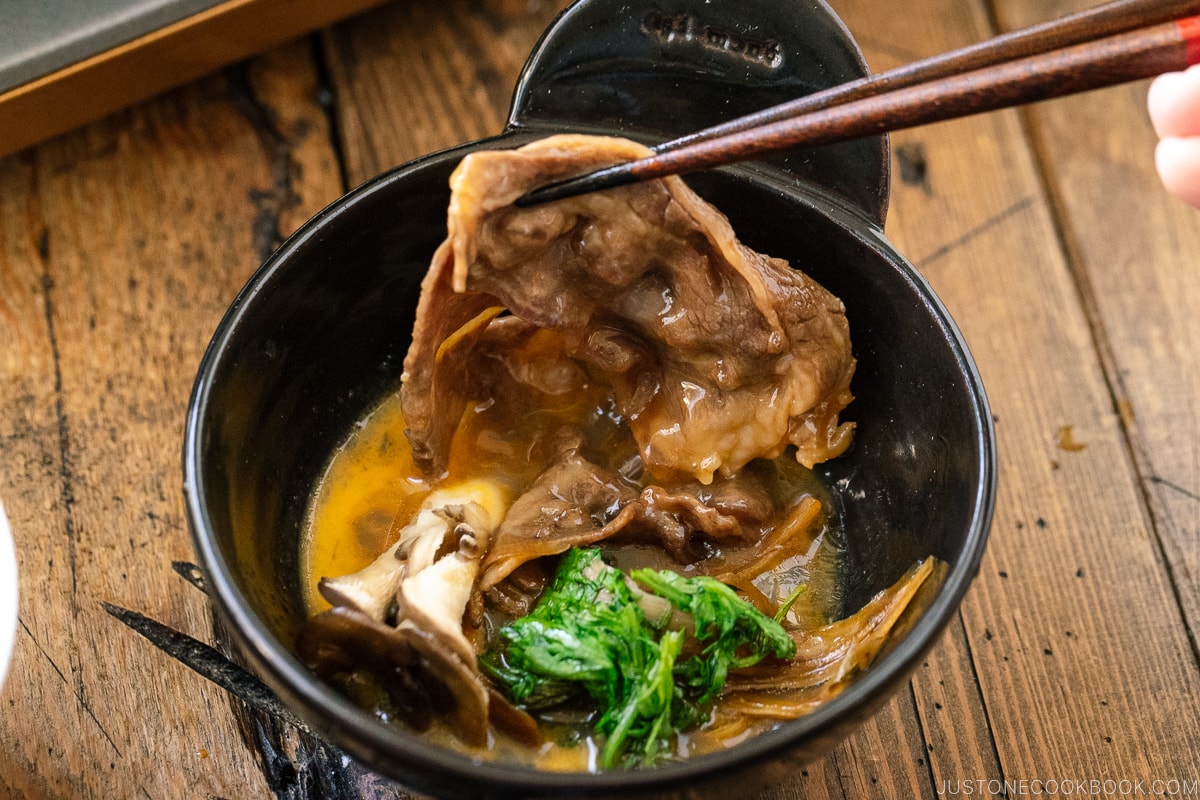
Since raw eggs here in the U.S. are not safe to consume, you can purchase pasteurized eggs. Although I found one at a Japanese market, Nijiya, before, it’s not always there and pasteurized eggs are hard to find elsewhere.
If you have an immersion circulator (sous vide precision cooker), you can pasteurize your eggs at home using the sous-vide method.

Sukiyaki vs. Shabu Shabu
Now that you’re familiar with sukiyaki, you may wonder what is the difference between sukiyaki and another popular hot pot dish, shabu shabu. Let’s take a closer look.

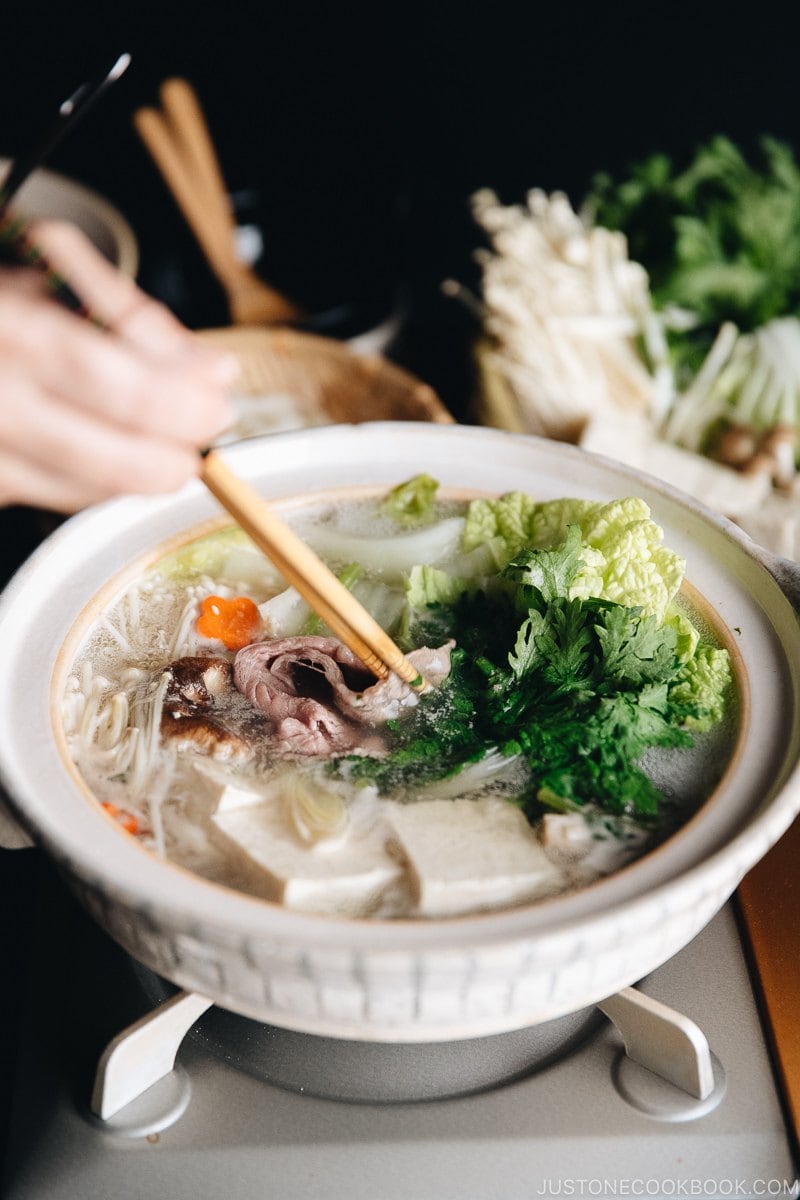
Sukiyaki (すき焼き)
We sear thinly sliced beef and then cooked it alongside other ingredients in a sweet and salty soy sauce-based sauce. It is full of bold flavors straight from the pot. Traditionally, we enjoy all the cooked food after dipping in a beaten raw egg.
- Equipment: Cast-iron pot
- Broth: Warishita (a mixture of soy sauce, sake, mirin, and sugar, diluted with kombu dashi)
- Meat: Well-marbled beef (thicker than shabu shabu beef)
- Vegetables: Napa cabbage, chrysanthemum greens, Tokyo negi, carrot, shirataki noodles
- Tofu: Grilled tofu
- Mushrooms: Shiitake, enoki, shimeji, maitake
- Final course (Shime): Udon noodles
- Dipping sauce: Raw eggs
Shabu Shabu (しゃぶしゃぶ) [recipe]
In this dish, we cook thinly sliced beef or pork and all kinds of ingredients in a clear kombu-based broth. The flavor is subtle and you dip the cooked food in a ponzu or sesame-based sauce.
- Equipment: Donabe (Japanese clay pot)
- Broth: Kombu dashi
- Meat: Well-marbled beef or pork
- Vegetables: Napa cabbage, chrysanthemum greens, Tokyo negi, mizuna, carrot
- Tofu: Medium-firm tofu
- Mushrooms: Shiitake, enoki, shimeji, maitake
- Final course (Shime): Udon noodles, rice
- Dipping Sauce: Ponzu sauce and/or sesame sauce
Despite having different flavors and cooking pots, both sukiyaki and shabu shabu have similar ingredients, such as leafy vegetables, tofu, mushrooms, and so on.
Both sukiyaki and shabu shabu are representative dishes of Japan that eventually spread throughout the country and around the world. With high-prized beef on the table, it is always a delicacy in Japan. People of all ages, from children to adults, love it!
Other Hot Pot Recipes
- Shabu Shabu
- Yosenabe
- Mizutaki (Chicken Hot Pot)
- Chanko Nabe (Sumo Stew)
- Soy Milk Hot Pot
- Nabemonot: A Guide to Japanese Hot Pot
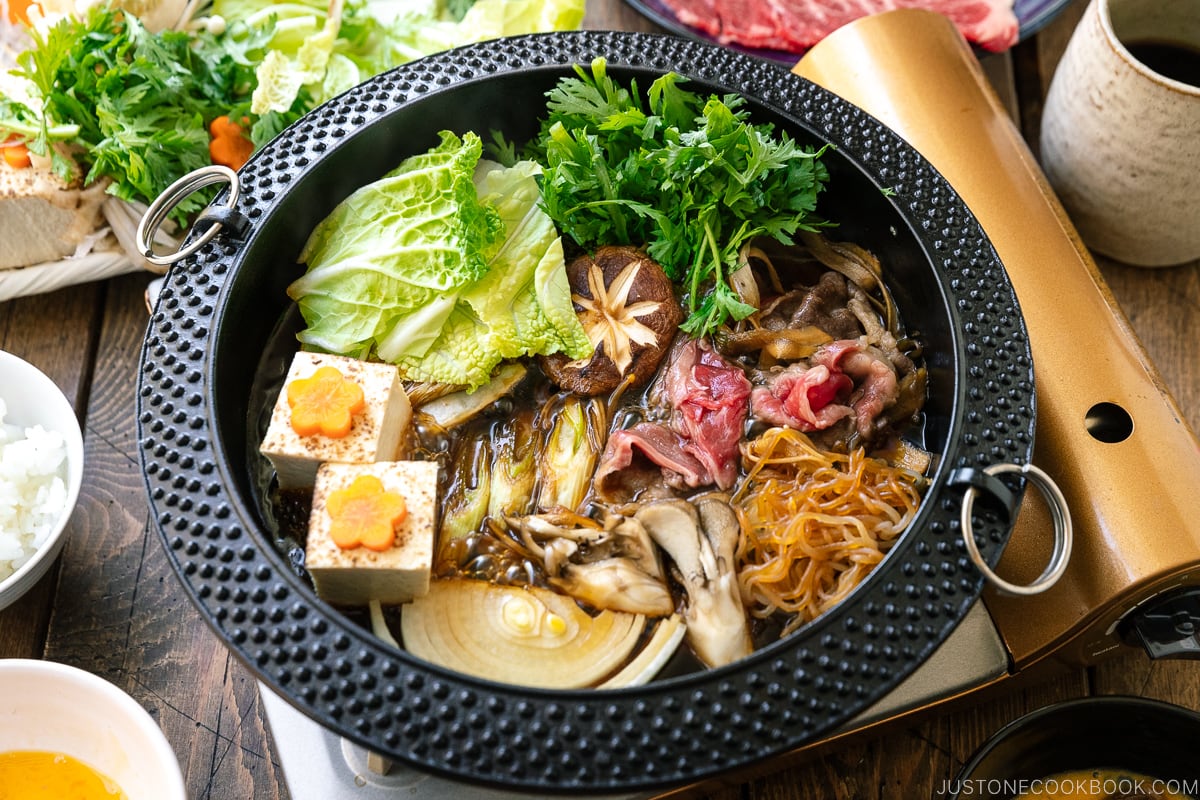
Wish to learn more about Japanese cooking? Sign up for our free newsletter to receive cooking tips & recipe updates! And stay in touch with me on Facebook, Pinterest, YouTube, and Instagram.
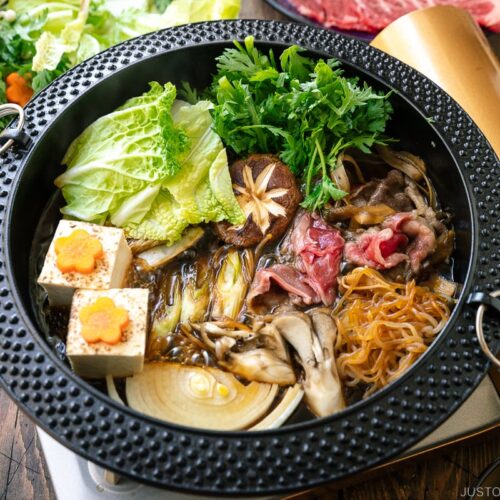
Sukiyaki
Video
Ingredients
For the Kombu Dashi (for diluting the cooking sauce; as needed)
- 2 cups water
- 1 piece kombu (dried kelp) (2 x 2 inches, 5 x 5 cm; 5 g per piece)
For the Sukiyaki
- 4 leaves napa cabbage (12 oz, 340 g)
- ¼ bunch shungiku (chrysanthemum greens) (3.5 oz, 100 g)
- 1 Tokyo negi (naga negi; long green onion) (white part only; or 1 leek/4 green onions)
- 6 inches gobo (burdock root) (1.6 oz, 45 g)
- ½ onion (3.5 oz, 100 g)
- ½ package enoki mushrooms (1.75 oz, 50 g; skip or use other mushrooms)
- ½ package maitake mushrooms (1.75 oz, 50 g; skip or use other mushrooms)
- 2 shiitake mushrooms (1.75 oz, 50 g; skip or use other mushrooms)
- ½ package broiled tofu (yaki dofu) (one package is 9 oz, 255 g; or use medium-firm (momen) tofu)
- 1½ inches carrot (optional, for decoration and color)
- ½ package shirataki noodles (3.5 oz, 100 g; or cellophane/yam noodles)
- ½ lb thinly sliced beef (chuck or ribeye) (or slice your own meat; skip for vegan/vegetarian and use more tofu, mushrooms, and vegetables)
- 1 Tbsp neutral oil (or 1 small piece of suet (raw beef fat))
For Serving
- 2 large eggs (50 g each w/o shell) (optional, for dipping; for safety, buy pasteurized eggs or make sous vide eggs; skip for vegan)
For the Shime Finishing Course
- 1 serving udon noodles (cooked and drained)
Instructions
To Make the Kombu Dashi and Sukiyaki Sauce
- Gather all the dashi and sauce ingredients. Tip: You‘ll use the dashi and sauce to adjust the seasoning of the broth as you cook. This recipe makes more dashi than you need for this dish and you‘ll likely have leftovers.

- To make the cold brew Kombu Dashi, put 2 cups water and 1 piece kombu (dried kelp) in a measuring cup or pitcher. Set it aside to steep for a minimum of 30 minutes, or make it ahead up to overnight.

- To make the sukiyaki sauce, combine ½ cup sake and ½ cup mirin in a small saucepan. Bring it to a boil and reduce the heat to simmer and let the alcohol evaporate for a minute or so.

- Add 3 Tbsp sugar and ½ cup soy sauce and mix together. Bring it back to a boil. Once the sugar is completely dissolved, turn off the heat and set it aside.

- Transfer the sauce to a pitcher and bring both the dashi and the sauce to the table. Tip: You can make the sukiyaki sauce ahead and store it in an airtight container in the refrigerator for up to a month.

To Prepare the Sukiyaki Ingredients
- Gather all the sukiyaki ingredients. Feel free to customize the portions to suit your personal preference. Here, I used the entire package of grilled tofu (twice as much) since we love tofu.

- Cut 4 leaves napa cabbage into pieces 2 inches (5 cm) wide.

- Cut the pieces in half or thirds down along the thick white center of the leaves.

- Cut ¼ bunch shungiku (chrysanthemum greens) 2 inches (5 cm) wide.

- Slice the white part of 1 Tokyo negi (naga negi; long green onion) diagonally into ½-inch (1.3 cm) pieces.

- Scrape off the outer skin of 6 inches gobo (burdock root) with the back of a knife. The gobo‘s flavor is just under the skin, so don‘t use a vegetable peeler and peel that flavor away. Once you scrape off the skin, shave the gobo into superthin strips using a vegetable peeler.

- Soak the gobo strips in water for 5 minutes, changing the water once. Drain well.

- Cut ½ onion into ½-inch (1.3 cm) slices widthwise. Next, discard the bottom part of ½ package enoki mushrooms and tear it into smaller clusters.

- Cut off and discard the root ends of ½ package maitake mushrooms and separate the maitake bunch into 2 small clusters.

- Cut off and discard the stems of 2 shiitake mushrooms. Optionally, you can cut a flower pattern on the shiitake mushroom caps: First, cut a sliver off the top of the mushroom cap by making 2 incisions in the shape of a “V". Bevel these cuts toward each other by inserting the knife at an angle.

- Make a second cutout in the same manner to form an "X" with the first cutout. You can keep this "X" pattern or add one or two more cutouts. Watch my video on "shiitake hanagiri" that demonstrates this Japanese cutting technique.

- Cut ½ package broiled tofu (yaki dofu) into smaller pieces. We usually double the tofu portion and cut one block into 6–8 pieces.

- If you‘d like to make flower-shaped carrots (optional), first slice 1½ inches carrot into ¼-inch (6 mm) rounds.

- Here, I stamp the carrot coins with a vegetable cutter into a floral shape for decoration.

- Rinse and drain ½ package shirataki noodles. Cut the noodles in half. Add the shirataki noodles to boiling water to remove any odor. Once the water is boiling again, cook for 2 minutes, drain, and set aside.

- Place ½ lb thinly sliced beef (chuck or ribeye) and suet (if using) on a plate. Put all the ingredients on a big platter or bamboo tray for the dining table. I prepared my eggs sous vide (read the blog post) for dipping the cooked sukiyaki ingredients. I also cooked and drained 1 serving udon noodles and set them aside for the final course.

To Cook the Beef
- Set a portable gas cooktop at the dining table. I use this cast-iron sukiyaki pot that I got from MTC Kitchen (use JOC10 for 10% off) and an Iwatani portable butane stove. Give each person a medium-sized bowl to put the cooked food from the pot.

- Heat the cast-iron sukiyaki pot (or any pot) on medium heat. When it’s hot, add 1 Tbsp neutral oil (or the suet). Then, pour in barely enough sukiyaki sauce to cover the bottom of the pot, about ⅛–¼ inch of sauce.

- Place a few slices of well-marbled beef in the pot. When the bottom side of the meat is cooked, flip and cook the other side. Enjoy some (or all) of the sweet and caramelized meat now to consume this good-quality beef at its best. You can eat a few rounds of meat first or leave the meat in the pot and continue to the next step.

To Enjoy with Pasteurized Raw Egg (optional)
- How to Enjoy Sukiyaki in Japan: In Japan, we prepare a raw egg for each person at the table. Everyone cracks their own egg in their individual small bowl, beats it, and dips the cooked ingredients in the egg to enjoy. While raw eggs are safe to consume in Japan, US raw eggs are not recommended for consumption unless they are pasteurized. Therefore, I pasteurize my eggs using the sous vide method. When you get a chance in Japan, please try this traditional way to enjoy sukiyaki.

- If you are using 2 large eggs (50 g each w/o shell) that are pasteurized, dip the cooked beef in the beaten egg to enjoy. The salty and savory sukiyaki ingredients become mild and sweet after dipping in the egg. If you‘re not using eggs, drizzle in a bit of kombu dashi to dilute the sauce in the pot, to your liking; otherwise, it might taste too salty.

To Cook the First Round of Sukiyaki
- Add some vegetables, tofu, mushrooms, and other ingredients (except the udon) to the pot. Pour in enough sukiyaki sauce to partially submerge the ingredients in the sauce, about one-third of the way or about ¼ inch of sauce. If you aren‘t using eggs for dipping, drizzle in a small amount of kombu dashi into the pot to dilute the sauce to your liking. Bring to a gentle simmer. Then, turn down the heat and simmer until cooked through. You can add more beef now, as it cooks fast. Taste the sauce and drizzle in a tiny bit of dashi or water if it‘s getting too salty.

- Transfer some of the cooked ingredients to the individual bowls and enjoy the first round of sukiyaki. Taste the food and adjust the seasoning in the pot as needed; drizzle in a bit of dashi or water if it‘s too salty or add a few drops of sukiyaki sauce if it needs more seasoning. Tip: Adjusting the seasoning as you go is a normal part of cooking and enjoying Sukiyaki.

To Cook the Second and Third (Optional) Rounds
- When there is less cooked food in the pot, portion what‘s left into the individual bowls. Then, start cooking the second round by adding more ingredients to the pot (repeat the previous step). While it's cooking, you can continue to eat the rest of the first round of sukiyaki or any side dishes. Eventually, you can cook a third round to finish any remaining uncooked ingredients. Tip: Continue to adjust the broth seasoning. If your sukiyaki sauce runs out, add soy sauce and sugar to the broth in a pinch. If your dashi runs out, use water instead.

To Enjoy the Finishing Course (Shime)
- We usually end the sukiyaki meal with a final course (shime) of udon. When most of the ingredients have disappeared, add the cooked udon noodles to the remaining broth in the sukiyaki pot. Heat through and enjoy.

To Store
- You can keep the Sukiyaki leftovers in an airtight container and store in the refrigerator for up to 3 days or in the freezer for a month. Tofu does not freeze well, so remove it before freezing. Store leftover kombu dashi in a bottle or airtight container in the refrigerator for 4–5 days (and use it for Miso Soup) or in the freezer for 2 weeks. Store leftover sukiyaki sauce in an airtight container in the refrigerator for up to a month.
Notes
Nutrition
Editor’s Note: This post was originally published on February 11, 2015. It’s been republished on January 29, 2023, with new images, blog content, and a revised recipe.
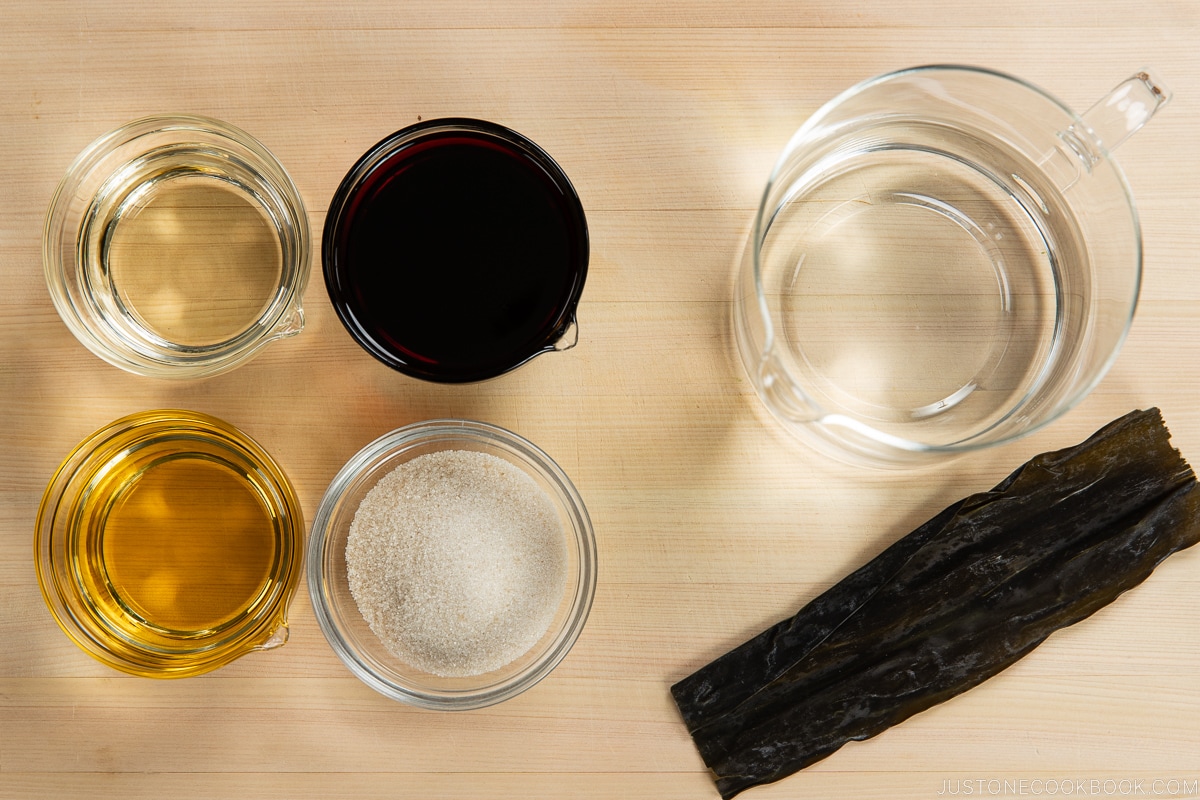


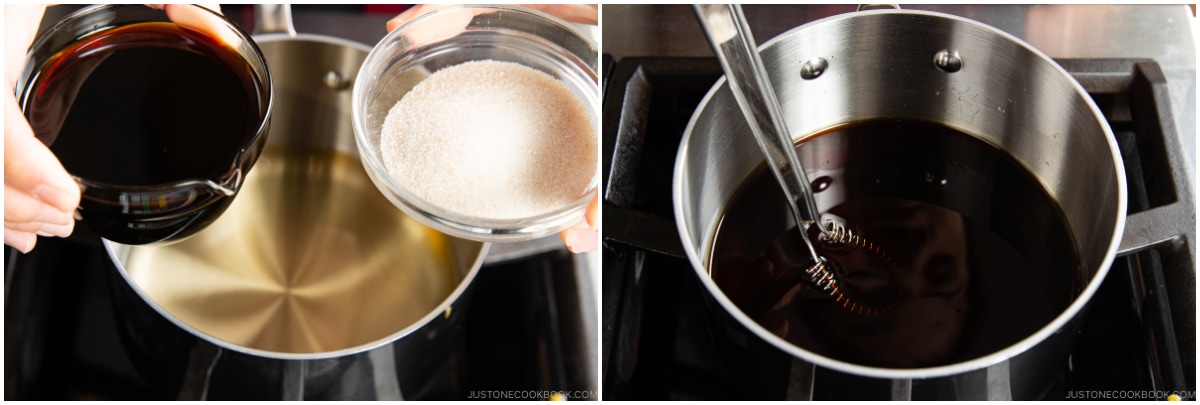
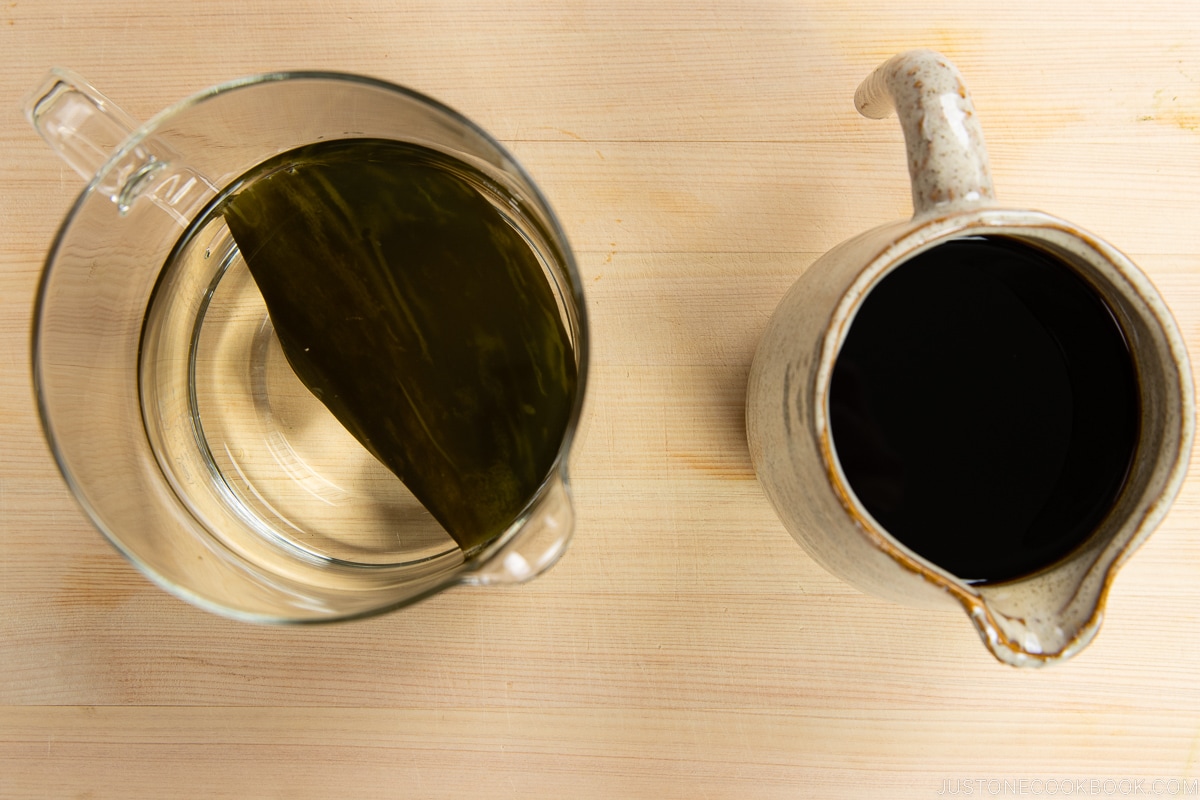
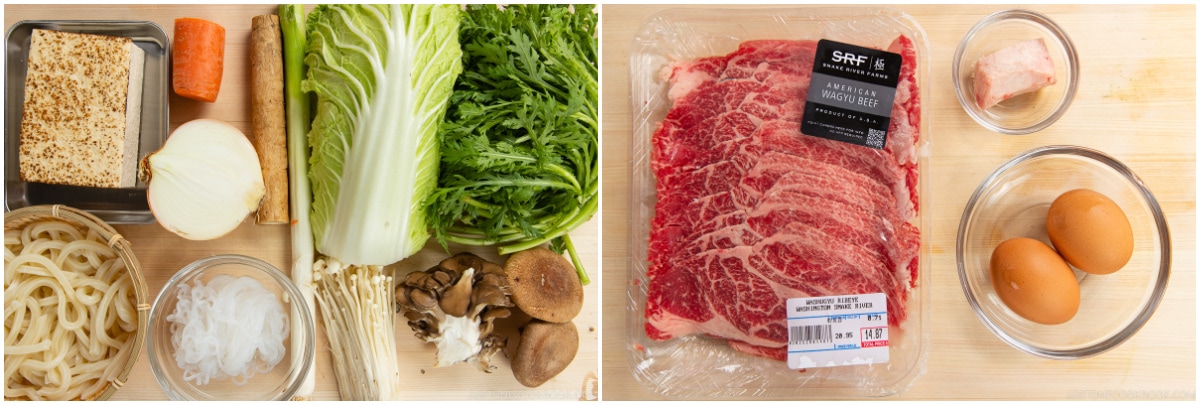
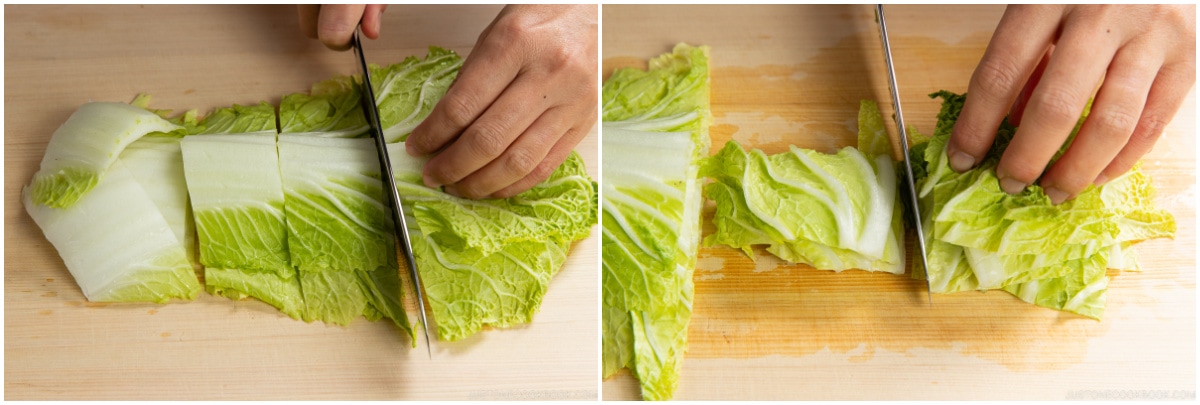
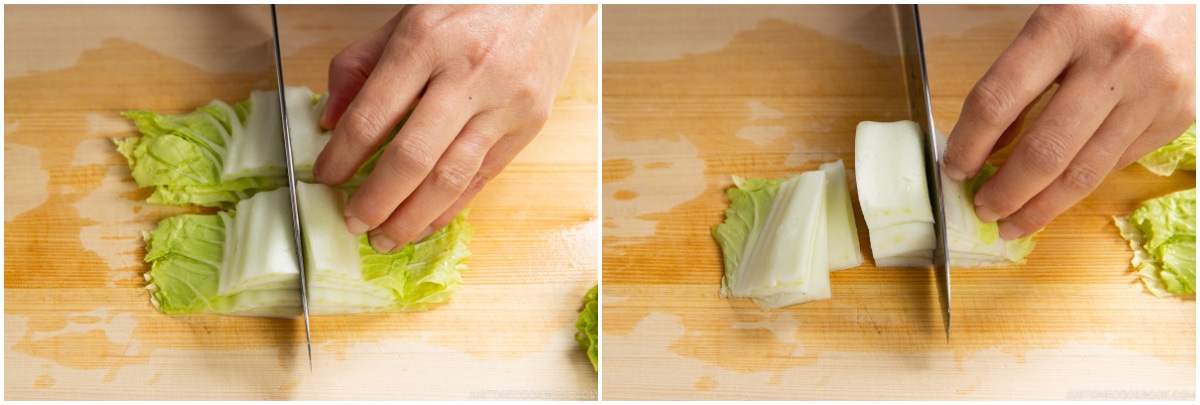
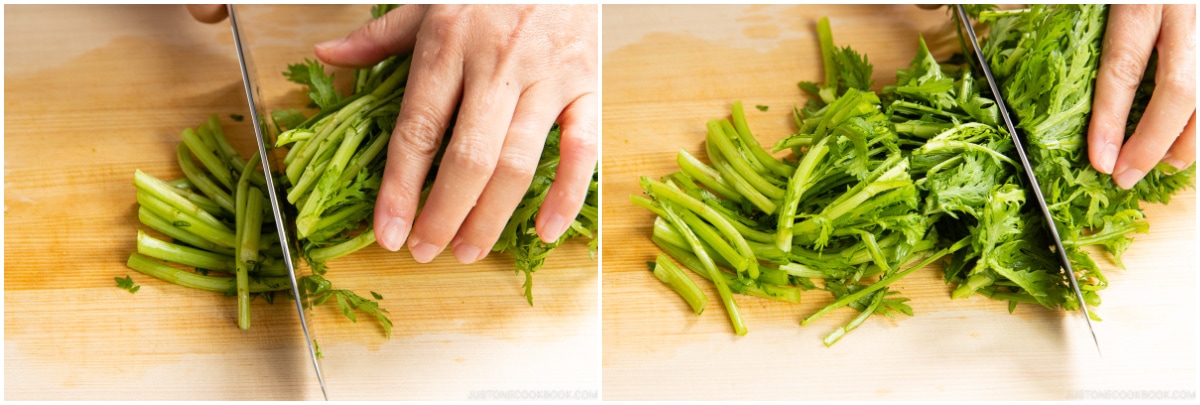
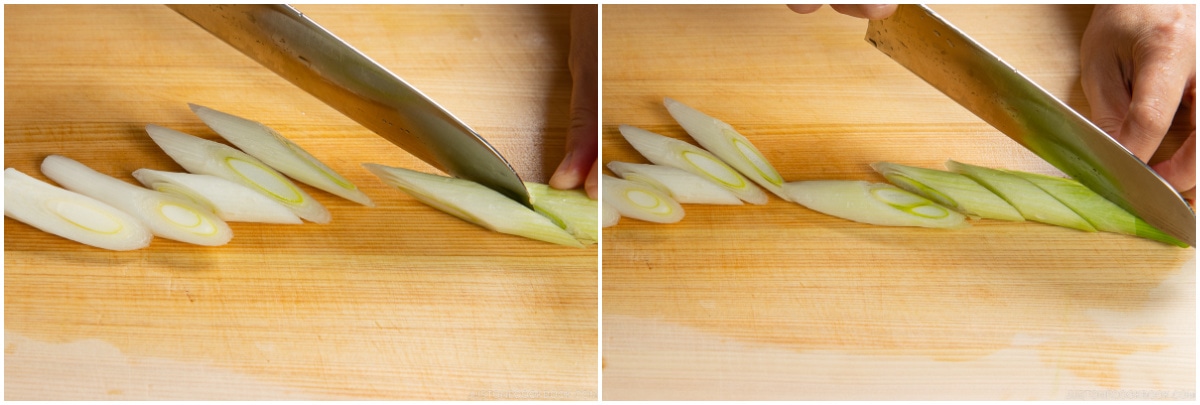
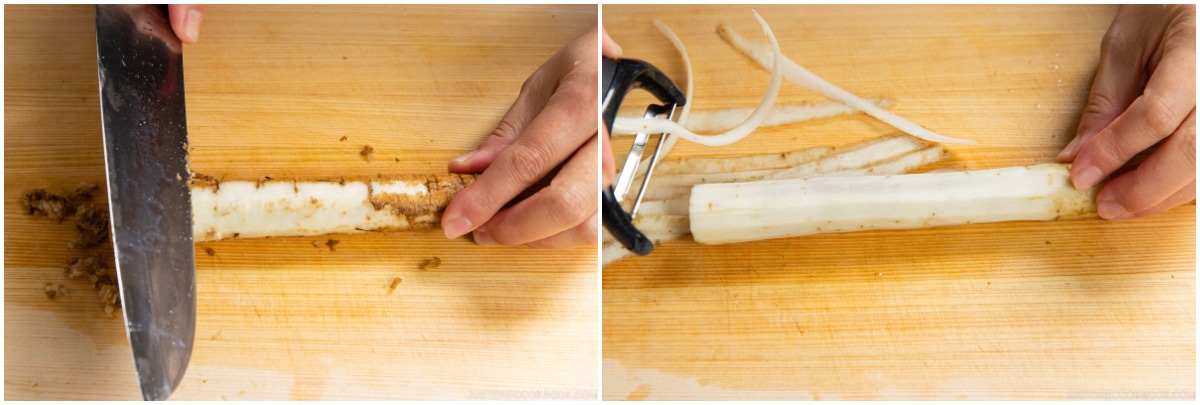
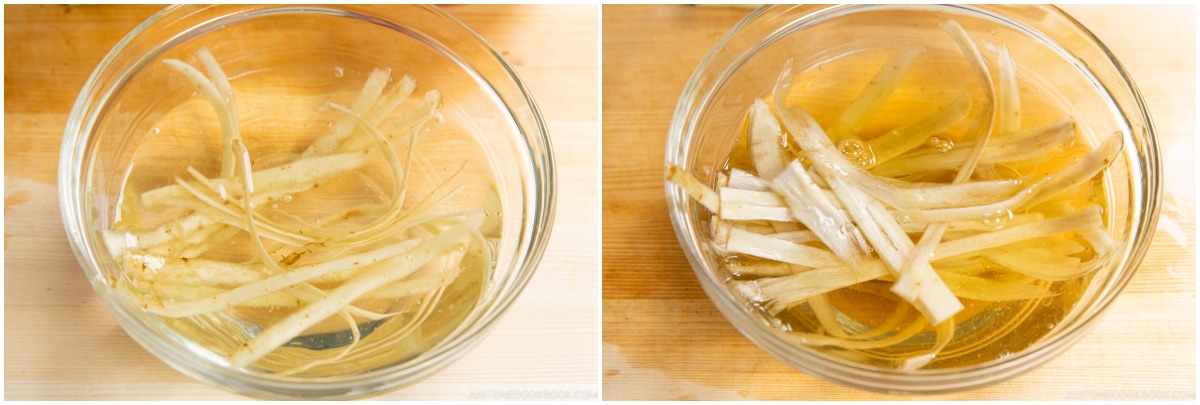
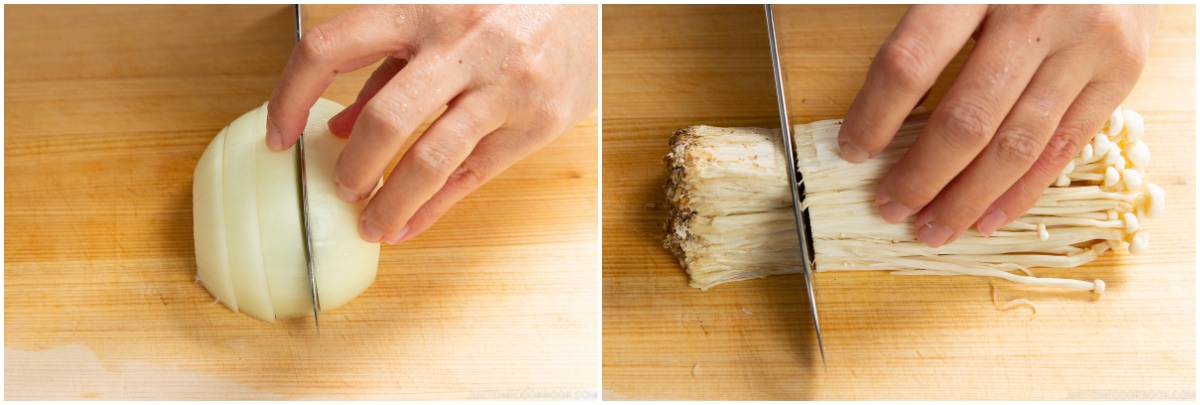
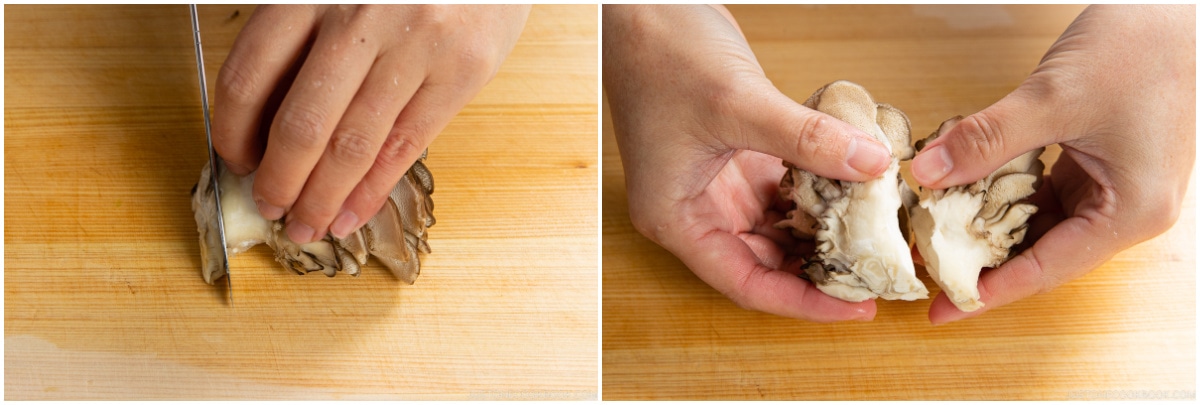
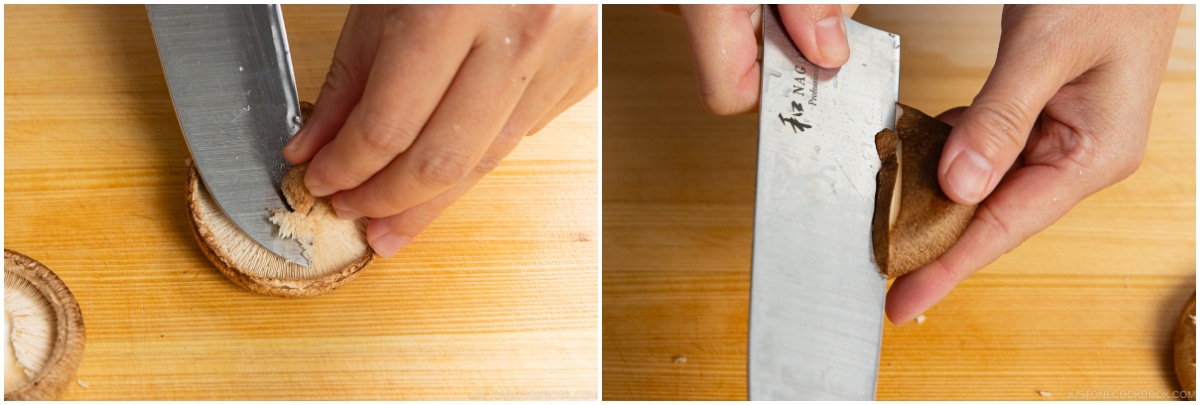
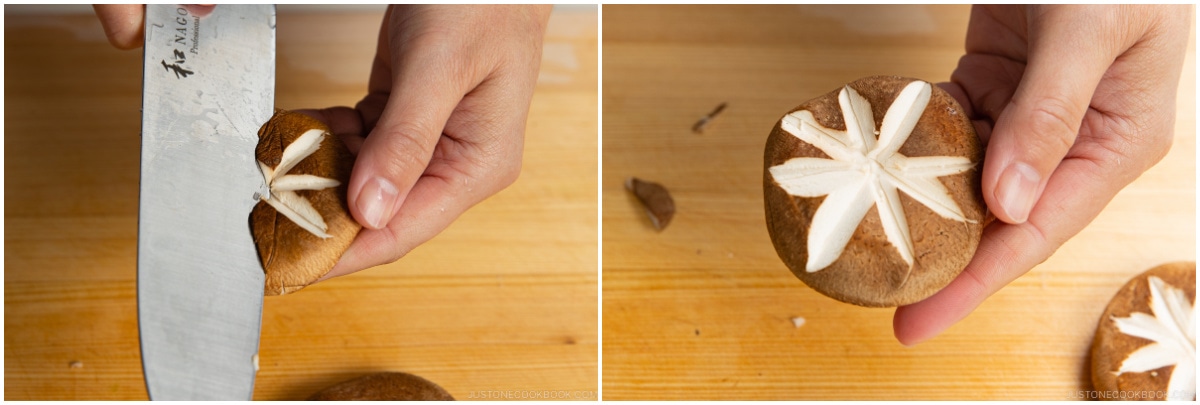
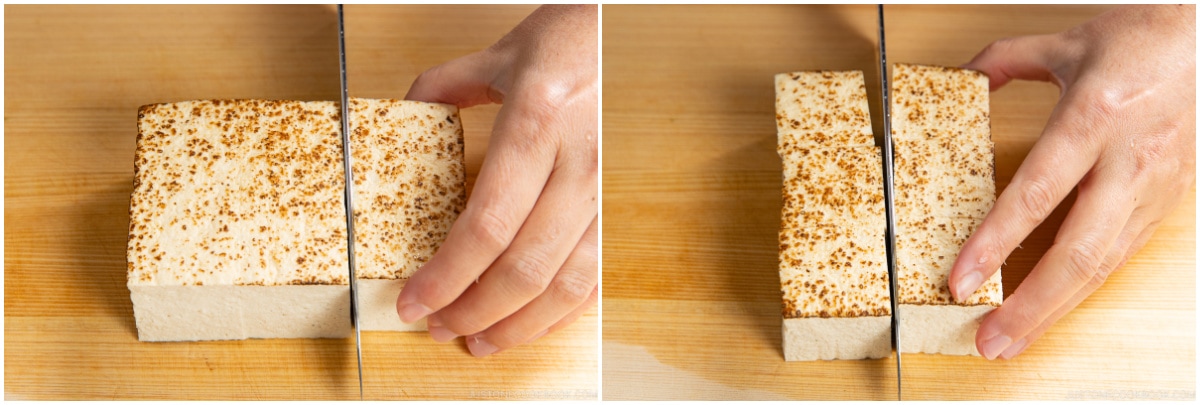
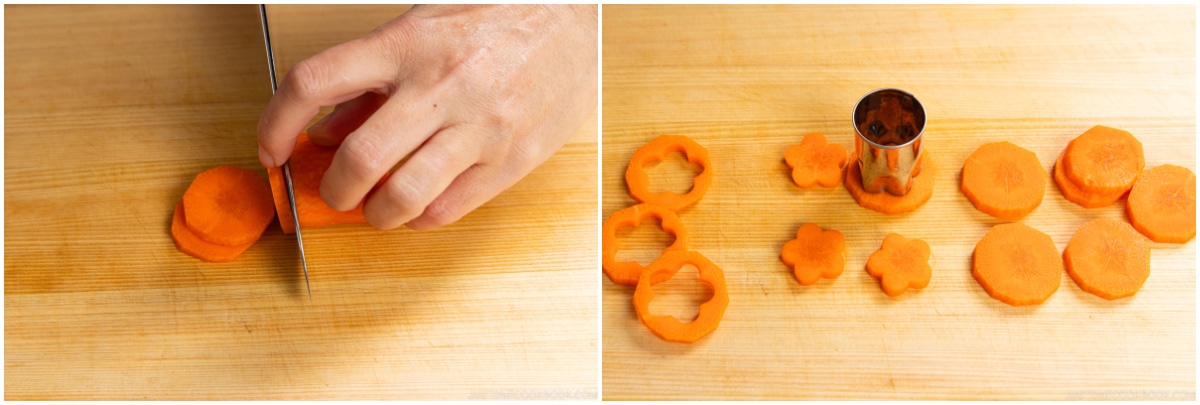
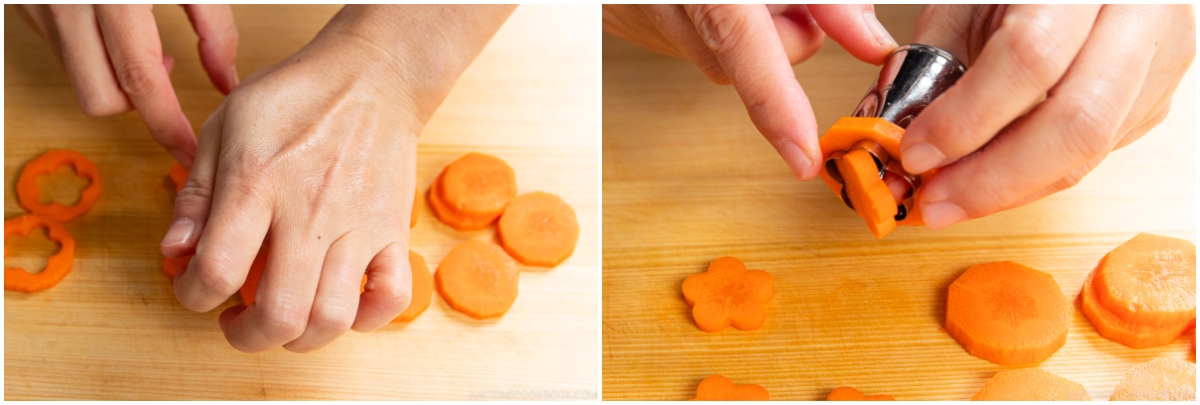
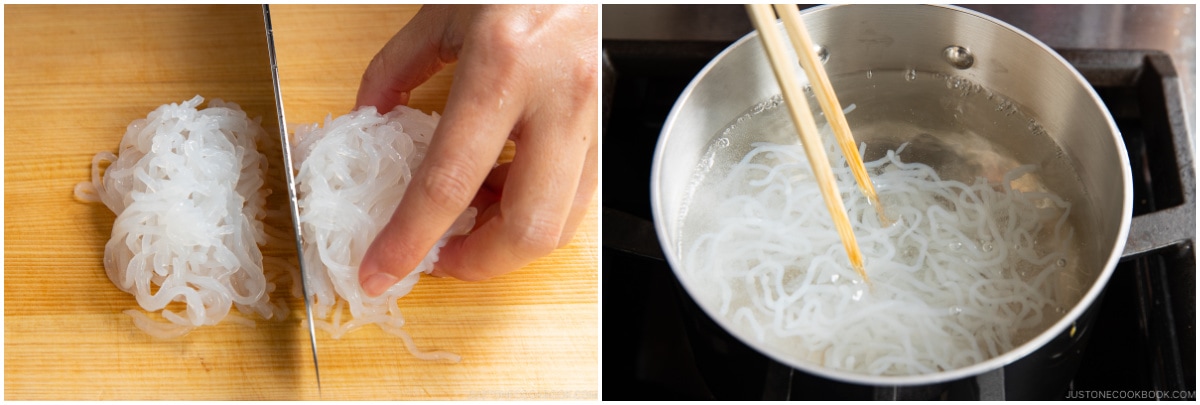
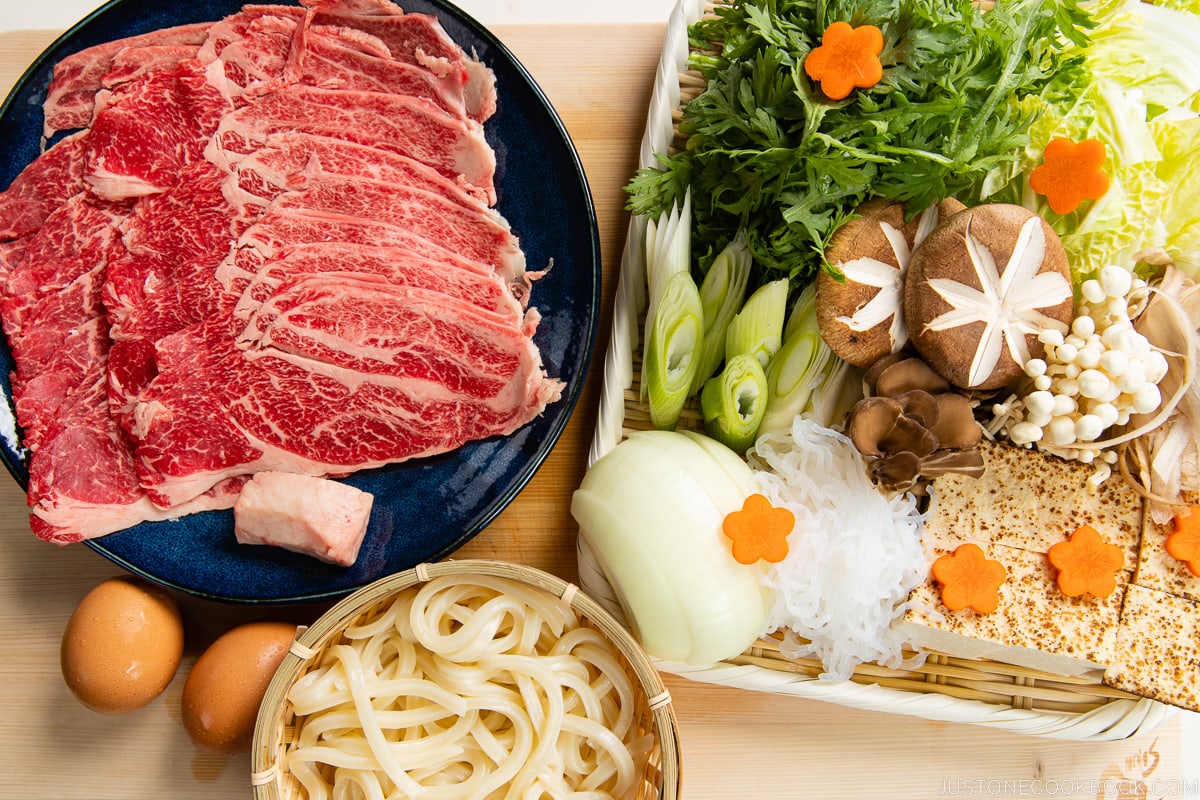
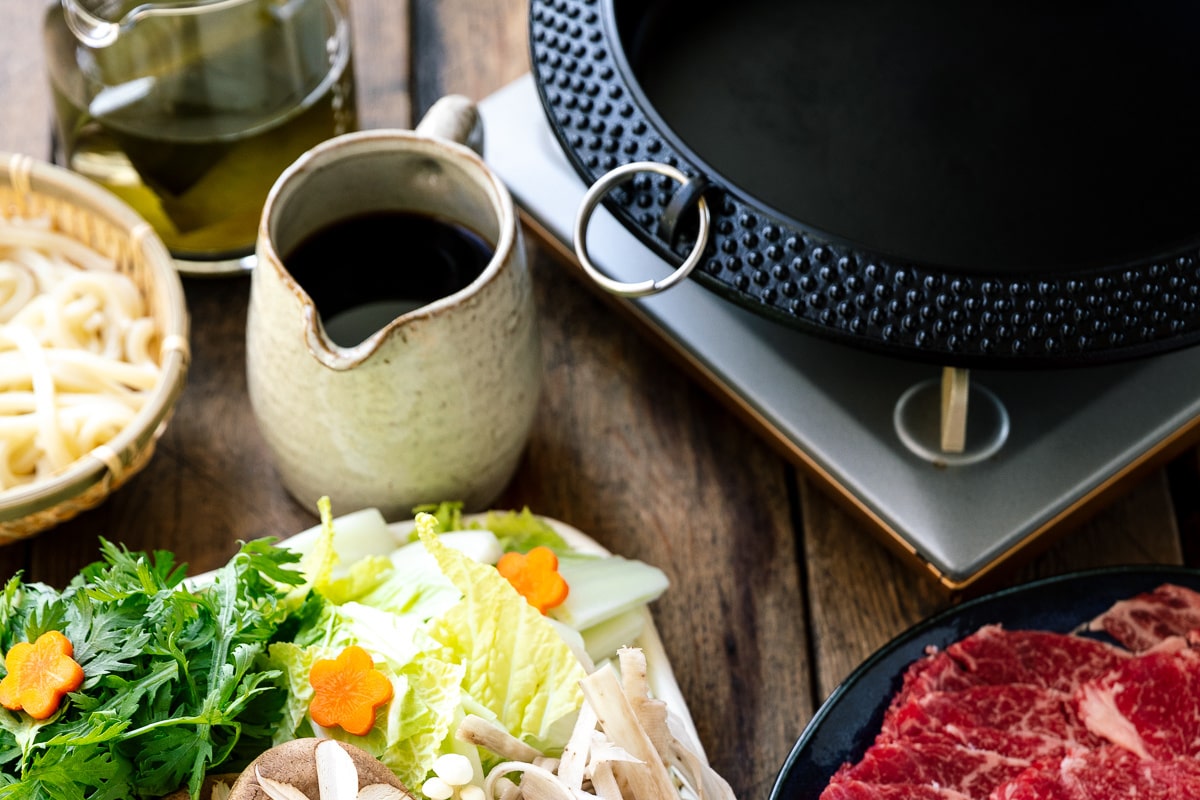
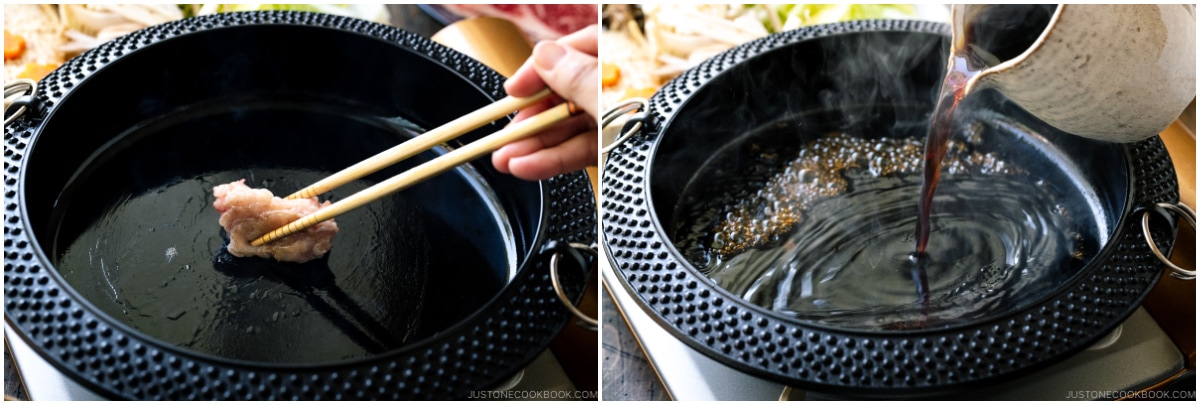
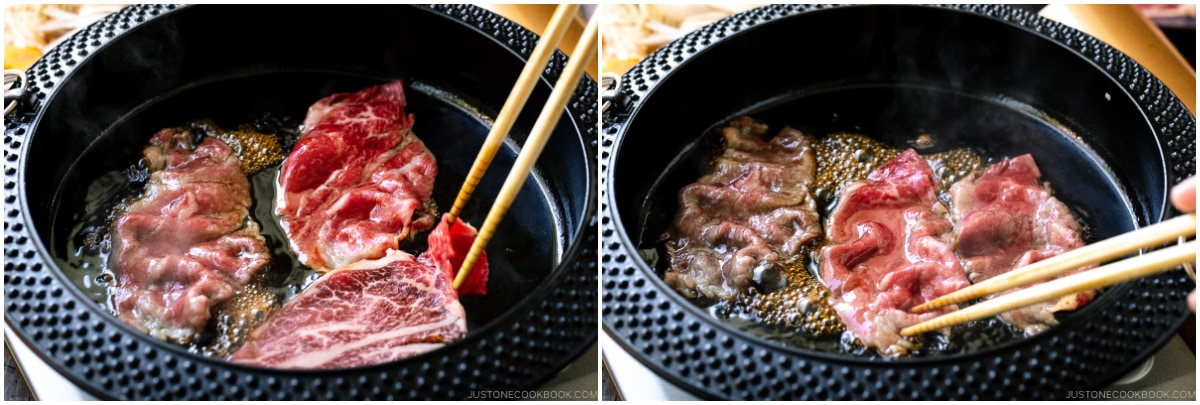
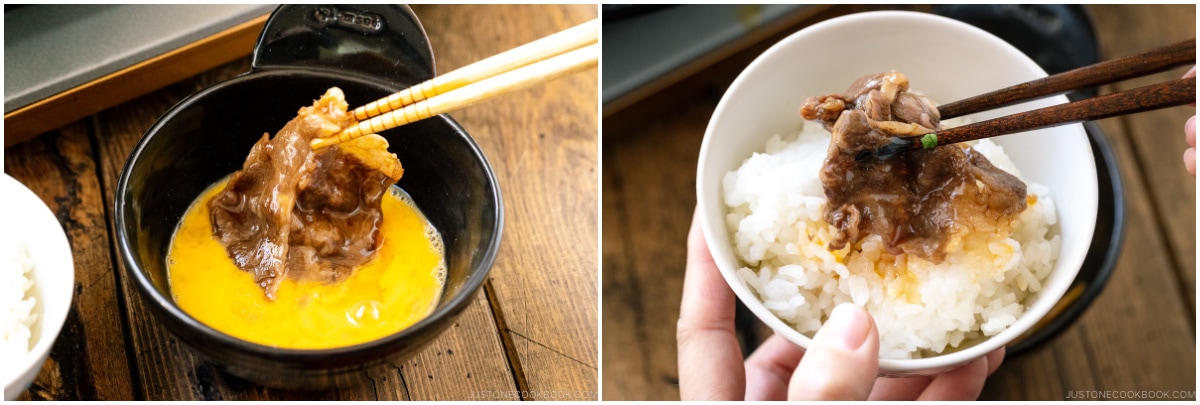


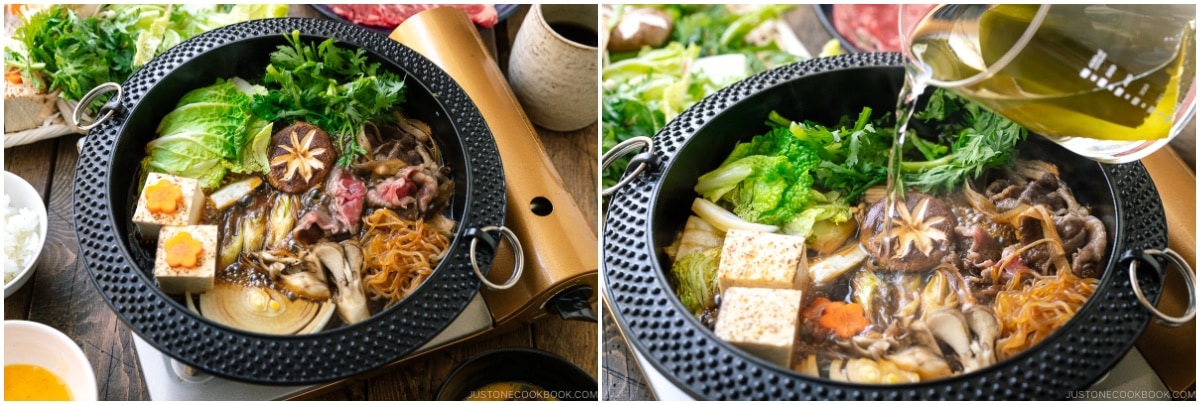
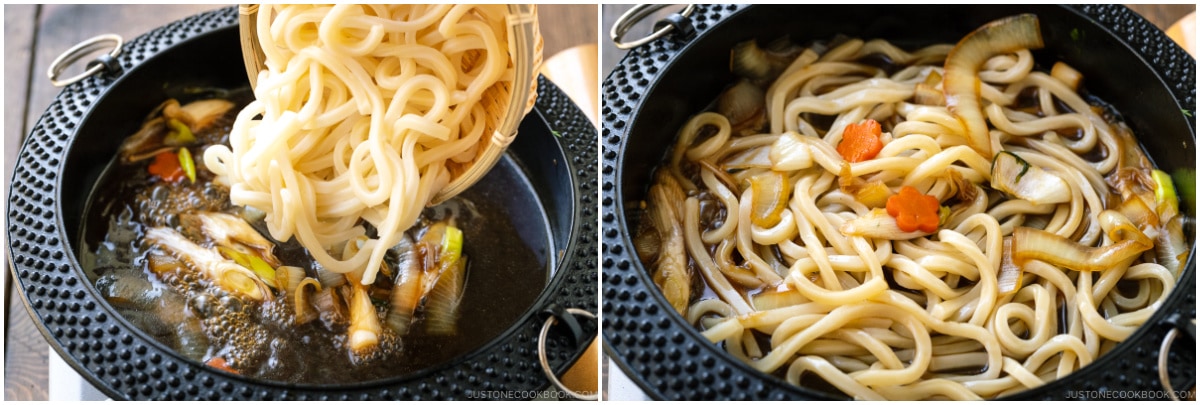
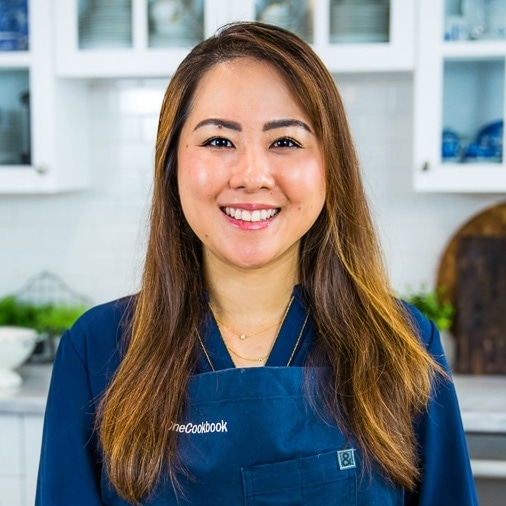

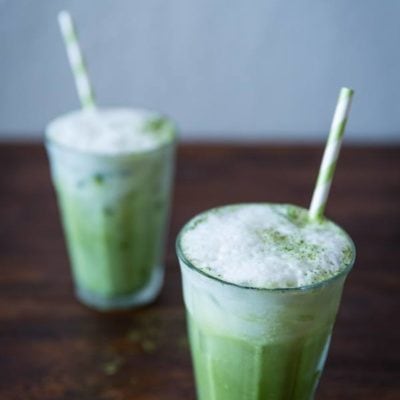

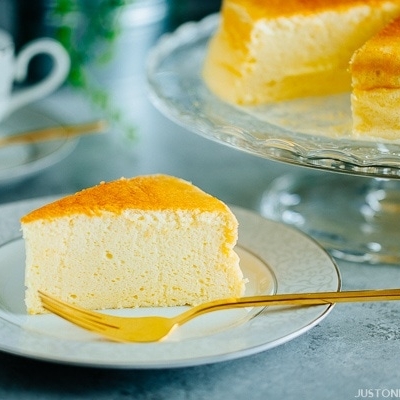


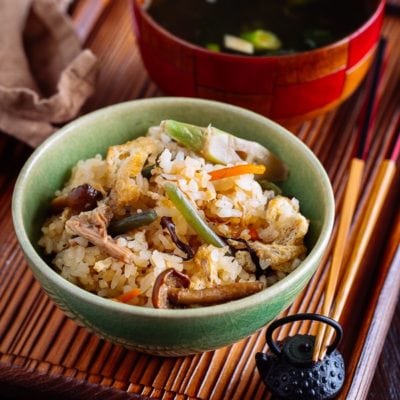
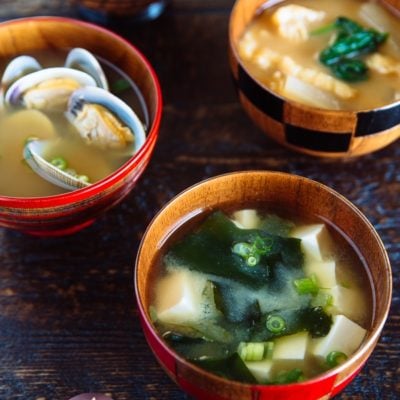


oh no you changed the sukiyaki sauce recipe. can you please post the old recipe. I thought it was 1cup soy, sake, mirin, and sugar. also unsure of the dashi ratio to sukiyaki sauce now. please can I have the old recipe my family loved it
Hi Jill. Don’t worry, everything is the same, except that I added more sugar to the sukiyaki sauce.
I changed the recipe from the original 4 servings to 2 servings. With x2 and x3 buttons, it’s easier this way to multiply.
So, if you liked the 4 servings, click x2 button. And you can reduce 2 Tbsp of sugar from the sukiyaki sauce recipe.
Hope this helps! I really like the new sauce recipe though. 🙂
Hi, I made this last night and I had the old recipe that I had printed out which says to use 1 1/3 cup sukiyaki sauce with 1 cup of dashi broth for the first serving and I think it was perfect. I looked on your new recipe and it doesn’t say to do this? I agree with other comments, that just the sukiyaki sauce alone would be too strong.
This was the first recipe, and I have made many, that I thought I should comment on. All the others were spot on and delicious!
Hi Patti! Thank you so much for your feedback.
My previous recipe (for 4 servings) uses 1 cup of sukiyaki sauce + 1/3 cup dashi (see my video from 2015 here: https://www.youtube.com/watch?v=JMTJXarcCLc) and mentioned that the leftover sukiyaki sauce can be saved.
One of the reasons I updated this sukiyaki recipe is that I wanted to cook the recipe properly. My previous recipe was published in 2015, and since then, I had sukiyaki in Japan many times and I realized my previous recipe uses too much broth to cook the ingredients. This time around (in 2023), I wanted to replicate the sukiyaki sauce from the sukiyaki restaurant and explain how sukiyaki is cooked and enjoyed in Japan. So, I updated the recipe.
Regarding the saltiness of the sukiyaki… If some people do not use raw eggs (or sous vide eggs), I understand that cooked food can be salty. That is one of the reasons why we eat sukiyaki with eggs to make it more mild and sweet, and we also eat it with steamed rice. Even for the Japanese people, sukiyaki is rather (sweet) salty and strongly flavored food. You mentioned about the commenters who also said salty… they used my previous recipe and not the new recipe I just published.
In my previous recipe, I should not have specified the amount of kombu dashi because the amount of kombu dashi depends on the vegetable amount you add or how much water has released from the veggies. It should be adjusted based on the cooking broth and everyone’s broth should be slightly different. In Japan, we adjust the broth’s flavor with sukiyaki sauce and kombu dashi (or water) throughout the cooking. It’s not a fixed sauce/broth. I completely failed to give instructions on this in the previous recipe. Also, for those who use eggs, kombu dashi is not needed as much as for those who don’t use eggs.
I really hope that this time I explained well. I really shouldn’t wait for 8 years to fix this and I apologize it took so long to correct it.
Dear Nami san,
Thanks for an excellent blog, site, and video channel!!
With my 4 grown up kids, 2 of whom were born in Japan, my family dinners usually include 8 to 10 people. When it comes to Nabe dinners for such a number, Shabu Shabu is a favorite. I place 2 sets of meat and vegetables, one on each side of the Donabe, so everybody could reach. The meal is progressing traditionally, with vegitables and meat placed as needed, and Udon noodles at the end.
Now here is my question, regarding Sukiyaki Kansai style. The regular pot cannot hold comfortably quantities for 10 people, searing the meat first and adding vegetables and tofu. So what is the solution if we want to keep one pot for social reasons? Doing it in 2 rounds wiping the pot dry between each round? Another way? Thanks
Hi Giora,
Thank you so much for your kind feedback!
With the number of your family, We would suggest a minimum of 2 sukiyaki cast iron pot (or Donabe, if that’s what you’re using) + portable gas stove set-ups. This also varies based on the pot, but typically each pot should serve 3-4 people. 5 is tight (maybe with small kids, sure).
And for Kansai-style, we enjoy the well-marbled meat ONLY in the first round. Once the sukiyaki sauce is added, there will be no more searing meat.
1) sear the meat and enjoy the meat itself,
2) add the ingredients and broth and cook while you enjoy side dishes,
3) once cooked, enjoy the first round of sukiyaki and continue to eat and divide/clean up the food left in the pot,
4) while cooking the second batch, enjoy the food and side dishes and wait till the second batch is done cooking. And continue… to 3rd batch or finish with udon.
We hope this is helpful.😊
My family truly enjoyed this recipe. If you want less sweet soup, you may reduce sugar to 1/8 cup. Thank you for this easy but flavorful and healthy diah. I also appreciate how you put even the small details of preparation. That makes Japanese food at home possible instead of eating in a Japanese resto, which can be expensive.
Hi Sheila! Thank you so much for trying this recipe. I’m really glad to hear your family enjoyed it! Thank you for your kind feedback and tip! xo
First time cooking sukiyaki at home, and tasted amazing! (Actually better because I could adjust the soup to my own taste. Usually it’s too salty in the restaurant.)
I’ve never knew the Kansai way of searing the meat first but… That was some of best meat!! I may change to cooking all the meat first, then everything else. XD Thank you Nami for introducing me to a new way of enjoying sukiyaki. 🙂
Hi Emmeline,
Thank you very much for trying this recipe and for your kind feedback!
We are so glad to hear you enjoy the new way of eating Sukiyaki.😊
Hi, I cooked this, it’s delicious! I have leftover sukiyaki sauce. How to store and how long can I store it? Thanks.
Hi Lisa! I’m so happy to hear you enjoyed this recipe! Yes you can store the sauce for up to a month in the fridge. 🙂
I’d like to thank your for the recipe.
I’d also like to point out that eggs are overwhelmingly safe in the U.S.; Salmonella (and Campylobacter) evolved to penetrate eggs in a very limited fashion in the late 1970s. While I’d like to see a cleaner, less profit driven environment in U.S. farms, you are very unlikely to contract “the stomach flu” from raw eggs pretty much anywhere in world (as long as they are handled correctly by the cook). If one is immunocompromised, it may be too great a risk to eat raw eggs (anywhere in the world), but otherwise I would recommend using the egg dip no matter where you live.
Hi Matthew! Yeah, I’ve heard that too, but I can’t recommend everyone to eat raw eggs and take full responsibility in case something happens. So.. I’ll have to take the safer route. It’s up to the reader (like you) who is knowledgable about this and fully enjoy Sukiyaki on their own risk. Sukiyaki is so good with raw eggs…:)
Hello! I am going to give it a try on the Sukiaki dish, my favorite one, but I dont think I can find the Shungiko around where I live there is any other subistitute for it? Arigato
Hi Cristiane! Don’t worry, you can skip Shungiku or Chrysanthemum leaves. They are sold in Korean/Chinese/Japanese grocery stores, but otherwise, it’s hard to find. You can add any green for the color. Spinach is even okay. Add toward the end as you don’t need to cook much. 🙂
I made this tonight using pork and it was a big hit with our family, mom + dad and three teenagers. A simple recipe that comes together pretty easily. I used a bottled sukiyaki sauce to save a bit of time.
Hi John! I’m so happy to hear you and your family enjoyed this recipe! Thank you for your kind feedback. 🙂
Next time, if you have a chance, I hope you try the homemade sukiyaki sauce. It’s our favorite!
Hello,
I made the sukiyaki and it was great! One question, can I store the extra sauce? If so how long will it last? Thank you.
Hi Michael! I’m glad to hear you enjoyed the recipe. Thank you for your kind feedback! You can keep the extra sauce if it wasn’t used in the pot. If you keep well (use a clean utensil to take out the sauce etc and no cross-contamination), the sauce lasts for months. 🙂
One more thing – before you use, make sure to reheat and kill any germs (you can’t see). And let cool and use it for sukiyaki.
[…] match! Besides teriyaki dishes, Takara sake also recommends trying REI with tempura, yakitori, sukiyaki, and sushi. It comes in a small 300 ml so it’s perfect for 1 or 2 person meal. If you […]
[…] author http://www.justonecookbook.com […]
[…] Sukiyaki […]
I made this today and it turn out great just like your other recipes. I also add some ginger slice when boiling the sukiyaki sauce because I love the smell of ginger. it
Hi Nao! I’m so happy to hear you enjoyed the recipe! Hmmm! Love the addition of ginger! 🙂
Very good recipe. Taste like home. I lived in US for over 30 years, now have a fam of 5, all of us eat raw egg almost daily (with rice, etc) and not once has anyone gotten sick. Just regular eggs from grocery. Idk American thought of raw eggs is ‘gross’ and unsafe but it is very good, especially with sukiyaki! Lets try!
Thank you for your kind feedback, Taiwa! I’m glad to hear you enjoyed the recipe! 🙂 Sukiyaki and raw egg is an excellent combination! 🙂
[…] and the white and sweet part of Shiro Negi is used for Yakitori and Nabe (hot pot dishes) such as Sukiyaki. In Kansai regions including Osaka and Kyoto, Ao Negi (青ねぎ, green negi) is used mostly for […]
Made this tonight and followed the instructions. It was awesome! It reminded the wife and I of the time we lived in Okinawa and the flavors we miss. Very easy to make and Will definitely be a regular.
Hi Patrick! I’m so glad to hear you and your wife enjoyed this recipe. Thank you for trying it and for your kind feedback. 🙂 Happy to hear this brought a fond memory from your trip to Okinawa!
This was a fantastic (and easy) dish. My family and I really enjoyed this. Question on step #11. What is the purpose of searing /caramelizing the meat with the brown sugar if one is going to proceed with #12 with the sukiyaki sauce + dashi (Kanto style) especially if more meat will be added later. I am just curious as I felt that step could have been skipped but maybe I am missing something.
Hi Jo Ann! Thank you so much for your kind feedback and I’m glad to hear you enjoyed the recipe! A lot of people enjoy the seared meat only first because it’s really good quality meat that it’s kind of like a treat. You would just taste the meat first and won’t wait till the sukiyaki is prepared. 🙂